SCHEME OF WORK
WEEKS TOPICS
1. Revision of last term's work
2 Information and Communication Technology.
3 Crude Oil and Petrochemicals.
4 Simple Machine (Wheel and Axle)
5 Simple Machine (The Screw thread)
6 Simple Machine (Gear)
7 Efficiency of Simple Machines
8 Work, Energy and Power
9 Kinetic Energy
10 Thermal Energy
11 - Revision
OLD SCHEME
WEEK TOPIC
1. Measurement
- Measurement of density, force, pressure mass and weight
- Force and effect of force
2. Simple Machines
- Definition and meaning
- Types of machines - the lever, inclined plane, pulley, screw driver thread, wedged and gears, wheels and axles.
- Efficiency of simple machines
- Maintenance of simple machines e.g. uses of grease, oil and ball bearings.
3. Food storage in the body
- Action of enzymes on food
- What happens to absorbed foods
4. Meaning and definition of immunization
- Importance of immunization and prevention against disease e.g. measles, small pox, poliomelytis, tuberculosis, whooping cough, yellow fever, cholera, malaria, typhoid etc.
- Maintaining balanced diet.
5. Wild life conservation - Man's activities
- Meaning and definition of wild life.
- Wildlife's role in a balanced environment
- Effects of limited and limited growth cycles.
- Wild life reserves in Nigeria.
6. Environmental pollution
- Meaning and definition of pollution
- Types of pollution - soil, air and water pollution.
- Air, soil and water pollutants and the effects.
- Control of air soil and water pollution.
7. Erosion and Flooding
- Meaning of erosion and flooding
- Causes and prevention of erosion
- Drainage patterns
- Causes and prevention of flooding
- Effects and control of erosion and flooding
8 Revision
3RD TERM
WEEK 1
LESSON 1
MAIN TOPIC: Revision
SPECIFIC TOPIC: Revision
PERFORMANCE OBJECTIVE: At the end of the lesson the students should be able to answer questions on selected topics correctly
CONTENT: Revision
1. The Skeletal System and Movement (human)

Study More...
Quiz 1
Quiz 2
Quiz 3
2. The muscular system (human)

Quiz 1
Quiz 2
3. The digestive system (human)
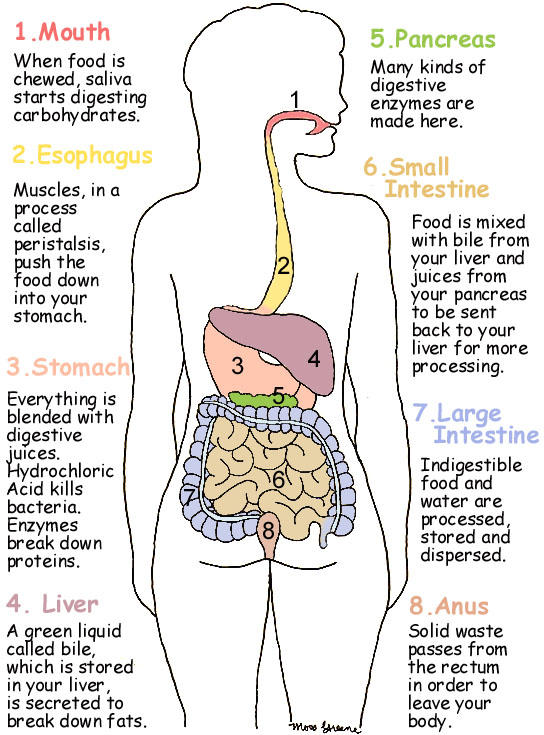
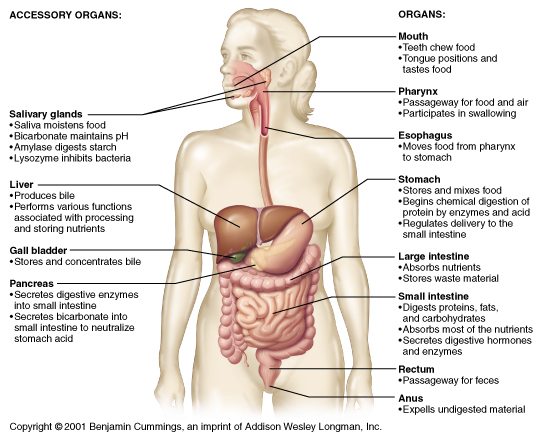
Quiz 1
Quiz 2
Quiz 3
Quiz 4
Quiz 5
LESSON 2
4. The respiratory system (human)

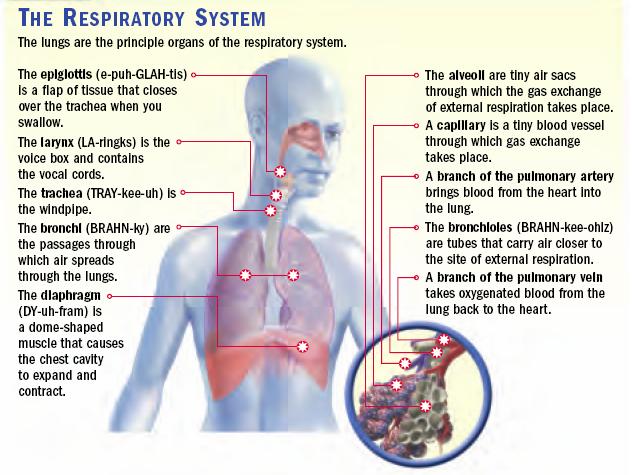
Quiz 1
Quiz 2
Quiz 3
5. The Circulatory System (human)
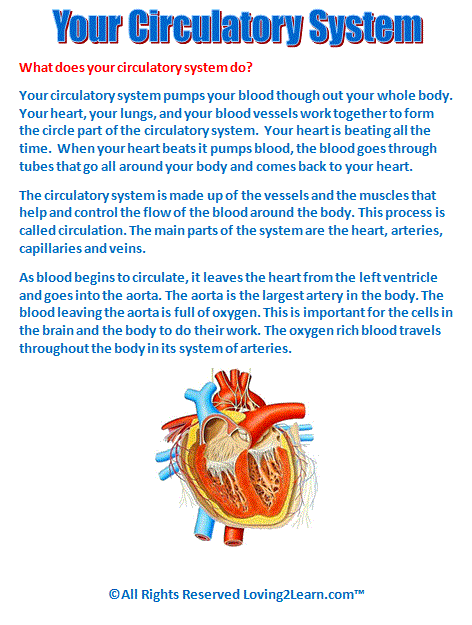
Quiz 1
Quiz 2
Quiz 3
Quiz 4
LESSON 3
6. The Excretory System (human)

Quiz 1
Quiz 2
Quiz 3
Quiz 4
7. Human Growth and Development
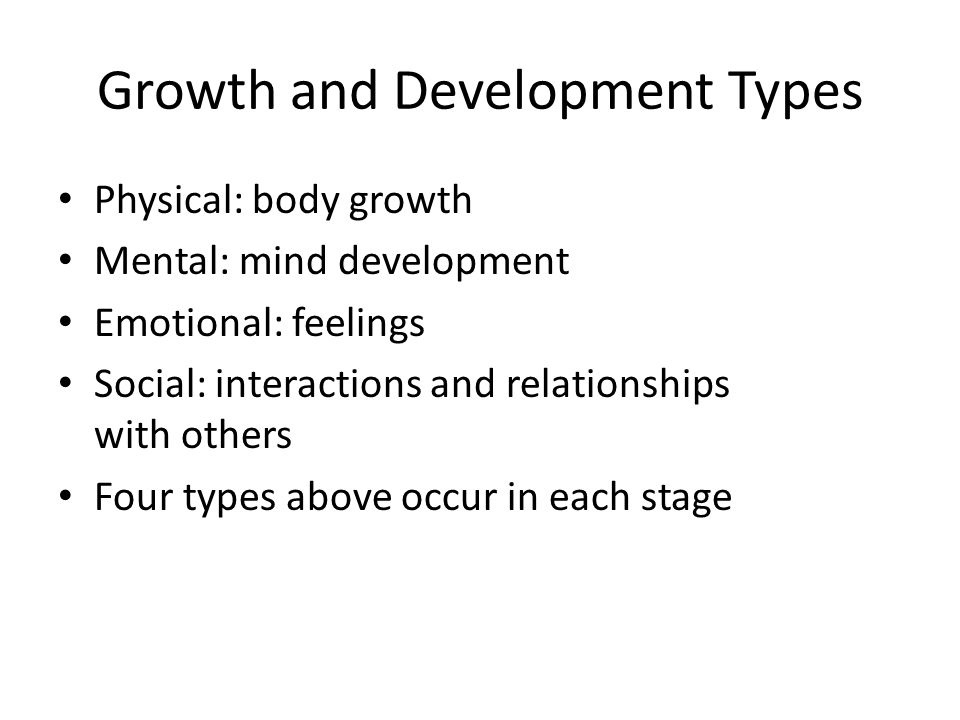
Quiz Practice
8. Living things
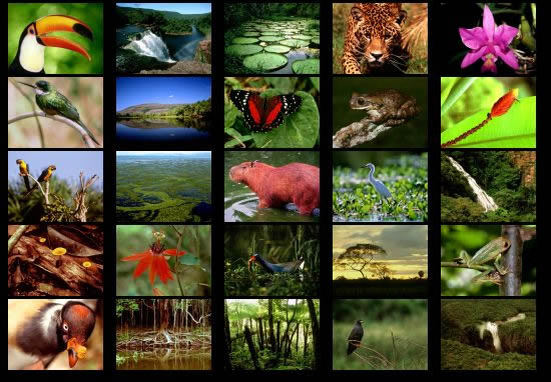
Study More...
Quiz 1
Quiz 2
Quiz 3
Quiz 4
9. Change - in-matters.
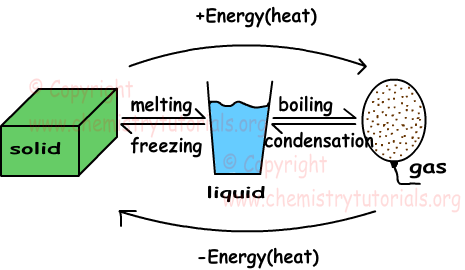
Quiz 1
Quiz 2
Quiz 3
MAIN TOPIC: Revision
SPECIFIC TOPIC: Revision
PERFORMANCE OBJECTIVE: At the end of the lesson the students should be able to answer questions on selected topics correctly
CONTENT: Revision
1. The Skeletal System and Movement (human)

Study More...
Quiz 1
Quiz 2
Quiz 3
2. The muscular system (human)

Quiz 1
Quiz 2
3. The digestive system (human)


Quiz 1
Quiz 2
Quiz 3
Quiz 4
Quiz 5
LESSON 2
4. The respiratory system (human)


Quiz 1
Quiz 2
Quiz 3
5. The Circulatory System (human)

Quiz 1
Quiz 2
Quiz 3
Quiz 4
LESSON 3
6. The Excretory System (human)

Quiz 1
Quiz 2
Quiz 3
Quiz 4
7. Human Growth and Development

Quiz Practice
8. Living things

Study More...
Quiz 1
Quiz 2
Quiz 3
Quiz 4
9. Change - in-matters.

Quiz 1
Quiz 2
Quiz 3
WEEK 2
LESSON 4
TOPIC: INFORMATION AND COMMUNICATION TECHNOLOGY
CONTENT:
1. Meaning of Information and Communication Technology.
2. Components of Information and Communication Technology.
3. Uses of Information and Communication Technology Components.
4. Importance of Information and Communication Technology.

MEANING OF INFORMATION AND COMMUNICATION TECHNOLOGY
Information and communications technology or information and communication technology usually abbreviated as ICT, is often used as an extended synonym for information technology (IT), but is usually a more general term that stresses the role of unified communications and the integration of telecommunications (telephone lines and wireless signals), computers, middleware as well as necessary software, storage- and audio-visual systems, which enable users to create, access, store, transmit, and manipulate information. In other words, ICT consists of IT as well as telecommunication, broadcast media, all types of audio and video processing and transmission and network based control and monitoring functions. The expression was first used in 1997 in a report by Dennis Stevenson to the UK government and promoted by the new National Curriculum documents for the UK in 2000.
The term ICT is now also used to refer to the merging (convergence) of audio-visual and telephone networks with computer networks through a single cabling or link system. There are large economic incentives (huge cost savings due to elimination of the telephone network) to merge the audio-visual, building management and telephone network with the computer network system using a single unified system of cabling, signal distribution and management. This in turn has spurred the growth of organizations with the term ICT in their names to indicate their specialization in the process of merging the different network systems.
Information and Communication Technology (ICT) is technology that supports activities involving the creation, storage, manipulation and communication of information, together with the related methods, management and application. In other words, ICT enables us to record, store, process, retrieve, and transmit information. It encompasses modern technologies such as computers, telecommunications, facsimile and microelectronics. Older technologies such as document filling systems, mechanical accounting machines, printing and cave drawings are also included in the term Information Technology.
Information and Communication Technology in today’s world refers to those technologies that determine the efficiency and effectiveness with which we communicate and the devices that allow us to handle information.
COMPONENTS OF INFORMATION AND COMMUNICATION TECHNOLOGY.
The components of Information and Communication Technology are;
1. Computers
2. Fax Machines
3. Mobile cell phones
4. Telephones
5. The Internet.
COMPUTERS
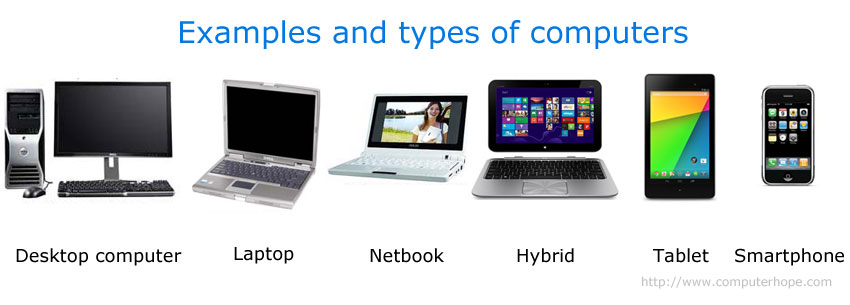
A computer is a programmable machine designed to automatically carry out a sequence of arithmetic or logical operations. The particular sequence of operations can be changed readily, allowing the computer to solve more than one kind of problem. An important class of computer operations on some computing platforms is the accepting of input from human operators and the output of results formatted for human consumption. The interface between the computer and the human operator is known as the user interface.
Conventionally a computer consists of some form of memory, at least one element that carries out arithmetic and logic operations, and a sequencing and control unit that can change the order of operations based on the information that is stored. Peripheral devices allow information to be entered from an external source, and allow the results of operations to be sent out.
A computer's processing unit executes series of instructions that make it read, manipulate and then store data. Conditional instructions change the sequence of instructions as a function of the current state of the machine or its environment.
The first electronic digital computers were developed in the mid-20th century (1940–1945). Originally, they were the size of a large room, consuming as much power as several hundred modern personal computers (PCs). In this era mechanical analog computers were used for military applications.
Modern computers based on integrated circuits are millions to billions of times more capable than the early machines, and occupy a fraction of the space Simple computers are small enough to fit into mobile devices, and mobile computers can be powered by small batteries. Personal computers in their various forms are icons of the Information Age and are what most people think of as "computers". However, the embedded computers found in many devices from mp3 players to fighter aircraft and from toys to industrial robots are the most numerous.
FAX MACHINES
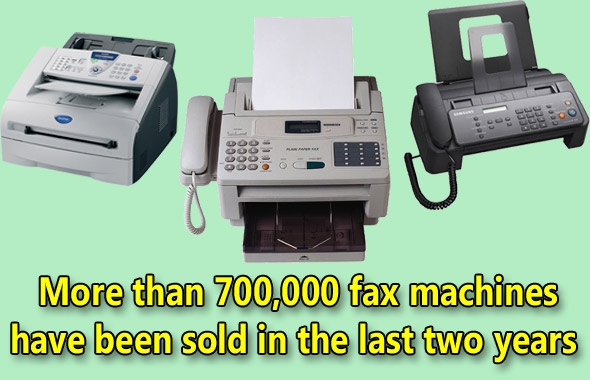
Fax machine short form for facsimile machine is a device that can send or receive pictures and text over a telephone line. Fax machines work by digitizing an image -- dividing it into a grid of dots. Each dot is either on or off, depending on whether it is black or white. Electronically, each dot is represented by a bit that has a value of either 0 (off) or 1 (on). In this way, the fax machine translates a picture into a series of zeros and ones (called a bit map) that can be transmitted like normal computer data. On the receiving side, a fax machine reads the incoming data, translates the zeros and ones back into dots, and reprints the picture.
A fax machine consists of an optical scanner for digitizing images on paper, a printer for printing incoming fax messages, and a telephone for making the connection. The optical scanner generally does not offer the same quality of resolution as stand-alone scanners. Some printers on fax machines are thermal, which means they require a special kind of paper.
The idea of fax machines has been around since 1842, when Alexander Bain invented a machine capable of receiving signals from a telegraph wire and translating them into images on paper. In 1850, a London inventor named F. C. Blakewell received a patent for a similar machine, which he called a copying telegraph.
MOBILE CELL PHONES

A mobile phone (also known as a cellular phone, cell phone and a hand phone) is a device that can make and receive telephone calls over a radio link whilst moving around a wide geographic area. It does so by connecting to a cellular network provided by a mobile phone operator, allowing access to the public telephone network. By contrast, a cordless telephone is used only within the short range of a single, private base station.
In addition to telephony, modern mobile phones also support a wide variety of other services such as text messaging, MMS, email, Internet access, short-range wireless communications (infrared, Bluetooth), business applications, gaming and photography. Mobile phones that offer these and more general computing capabilities are referred to as smart phones
The first hand-held mobile phone was demonstrated by Dr Martin Cooper of Motorola in 1973, using a handset weighing around 1 kg. In 1983, the DynaTAC 8000x was the first to be commercially available. In the twenty years from 1990 to 2011, worldwide mobile phone subscriptions grew from 12.4 million to over 5.6 billion, penetrating the developing economies and reaching the bottom of the economic pyramid.
TELEPHONES

Telephone is a VoIP program which allows you to make phone calls over the internet. It can be used to call regular phones via any appropriate SIP provider Telephone, instrument that sends and receives voice messages and data. Telephones convert speech and data to electrical energy, which is sent great distances. Modern technology has made the telephone much more portable, convenient, and versatile. Lightweight, handheld cell phones make it possible to place and receive calls on-the-go in many locations and at any time. Traditional telephones now link with radio, Internet, and satellite services as part of global telecommunications.
THE INTERNET

Internet is computer-based global information system. It is named after the Internet Protocol, the standard communications protocol used by every computer on the Internet. The Internet can powerfully leverage your ability to find, manage, and share information.
The Internet is composed of many interconnected computer networks. Each network may link tens, hundreds, or even thousands of computers, enabling them to share information and processing power.
Every computer that is connected to the Internet is part of a network. For example, you may use a modem and dial a local number to connect to an Internet Service Provider (ISP). You may be part of a local area network (LAN), but you most likely still connect to the Internet using an ISP. When you connect to your ISP, you become part of their network. The ISP may then connect to a larger network and become part of their network. The Internet is simply a network of networks.
Below is how networking takes place between the internet and our computers:

When you connect to the internet, your computer become part of a network.
LESSON 5
USES OF INFORMATION AND COMMUNICATION TECHNOLOGY COMPONENTS
1. Computer: Schools in Nigeria have computer in their time table. The interaction created by this ICT makes lesson much more effective and allow children to learn in a way that they enjoy. Recent initiative such as one laptop per student program in Deeper Life High School and other institutions in Nigeria are contributing to this development.
2. Internet: The internet has opened up many opportunities for finding out information, conducting communication globally through e-mail, voice mail, on line chatting etc
The uses of Mobile cell phones, fax machines and telephones relied greatly on the computer and internet. Through them e-mail, voice mail, chating etc are made possible.
IMPORTANCE OF INFORMATION AND COMMUNICATION TECHNOLOGY
The importances of ICT are:
1. It is use for data collection and analysis when carrying out researches.
2. It makes communication easy because through it we can communicate with anyone in the world.
3. In the field of genetic, ICT made it possible for scientist to carryout genetic coding.
4. It improve teaching and learning in schools because students can assess current information on any topic from the internet.
5. It makes banking system very easier through replacing local banking system with electronic banking.
6. It help in reducing human movement because business transactions can be accomplished through mobile phones or e-mail
EVALUATION
1. What is ICT?
2. List the components of ICT
3. What are the uses of ICT components?
4. What are the importance of ICT?
ASSIGNMENT
1. Explain how ICT has made the world a global village.
2. What are the limitations of PC?
further studies
http://www.esolcourses.com/content/ict/ ... ocab1.html
http://www.esolcourses.com/content/ict/ ... ulary.html
practice test
http://www.itdesk.info/en/basic-concepts-ict-quiz-2/
http://www.esolcourses.com/content/ict/ ... quiz1.html
http://www.esolcourses.com/content/ict/ ... -quiz.html
TOPIC: INFORMATION AND COMMUNICATION TECHNOLOGY
CONTENT:
1. Meaning of Information and Communication Technology.
2. Components of Information and Communication Technology.
3. Uses of Information and Communication Technology Components.
4. Importance of Information and Communication Technology.

MEANING OF INFORMATION AND COMMUNICATION TECHNOLOGY
Information and communications technology or information and communication technology usually abbreviated as ICT, is often used as an extended synonym for information technology (IT), but is usually a more general term that stresses the role of unified communications and the integration of telecommunications (telephone lines and wireless signals), computers, middleware as well as necessary software, storage- and audio-visual systems, which enable users to create, access, store, transmit, and manipulate information. In other words, ICT consists of IT as well as telecommunication, broadcast media, all types of audio and video processing and transmission and network based control and monitoring functions. The expression was first used in 1997 in a report by Dennis Stevenson to the UK government and promoted by the new National Curriculum documents for the UK in 2000.
The term ICT is now also used to refer to the merging (convergence) of audio-visual and telephone networks with computer networks through a single cabling or link system. There are large economic incentives (huge cost savings due to elimination of the telephone network) to merge the audio-visual, building management and telephone network with the computer network system using a single unified system of cabling, signal distribution and management. This in turn has spurred the growth of organizations with the term ICT in their names to indicate their specialization in the process of merging the different network systems.
Information and Communication Technology (ICT) is technology that supports activities involving the creation, storage, manipulation and communication of information, together with the related methods, management and application. In other words, ICT enables us to record, store, process, retrieve, and transmit information. It encompasses modern technologies such as computers, telecommunications, facsimile and microelectronics. Older technologies such as document filling systems, mechanical accounting machines, printing and cave drawings are also included in the term Information Technology.
Information and Communication Technology in today’s world refers to those technologies that determine the efficiency and effectiveness with which we communicate and the devices that allow us to handle information.
COMPONENTS OF INFORMATION AND COMMUNICATION TECHNOLOGY.
The components of Information and Communication Technology are;
1. Computers
2. Fax Machines
3. Mobile cell phones
4. Telephones
5. The Internet.
COMPUTERS

A computer is a programmable machine designed to automatically carry out a sequence of arithmetic or logical operations. The particular sequence of operations can be changed readily, allowing the computer to solve more than one kind of problem. An important class of computer operations on some computing platforms is the accepting of input from human operators and the output of results formatted for human consumption. The interface between the computer and the human operator is known as the user interface.
Conventionally a computer consists of some form of memory, at least one element that carries out arithmetic and logic operations, and a sequencing and control unit that can change the order of operations based on the information that is stored. Peripheral devices allow information to be entered from an external source, and allow the results of operations to be sent out.
A computer's processing unit executes series of instructions that make it read, manipulate and then store data. Conditional instructions change the sequence of instructions as a function of the current state of the machine or its environment.
The first electronic digital computers were developed in the mid-20th century (1940–1945). Originally, they were the size of a large room, consuming as much power as several hundred modern personal computers (PCs). In this era mechanical analog computers were used for military applications.
Modern computers based on integrated circuits are millions to billions of times more capable than the early machines, and occupy a fraction of the space Simple computers are small enough to fit into mobile devices, and mobile computers can be powered by small batteries. Personal computers in their various forms are icons of the Information Age and are what most people think of as "computers". However, the embedded computers found in many devices from mp3 players to fighter aircraft and from toys to industrial robots are the most numerous.
FAX MACHINES

Fax machine short form for facsimile machine is a device that can send or receive pictures and text over a telephone line. Fax machines work by digitizing an image -- dividing it into a grid of dots. Each dot is either on or off, depending on whether it is black or white. Electronically, each dot is represented by a bit that has a value of either 0 (off) or 1 (on). In this way, the fax machine translates a picture into a series of zeros and ones (called a bit map) that can be transmitted like normal computer data. On the receiving side, a fax machine reads the incoming data, translates the zeros and ones back into dots, and reprints the picture.
A fax machine consists of an optical scanner for digitizing images on paper, a printer for printing incoming fax messages, and a telephone for making the connection. The optical scanner generally does not offer the same quality of resolution as stand-alone scanners. Some printers on fax machines are thermal, which means they require a special kind of paper.
The idea of fax machines has been around since 1842, when Alexander Bain invented a machine capable of receiving signals from a telegraph wire and translating them into images on paper. In 1850, a London inventor named F. C. Blakewell received a patent for a similar machine, which he called a copying telegraph.
MOBILE CELL PHONES

A mobile phone (also known as a cellular phone, cell phone and a hand phone) is a device that can make and receive telephone calls over a radio link whilst moving around a wide geographic area. It does so by connecting to a cellular network provided by a mobile phone operator, allowing access to the public telephone network. By contrast, a cordless telephone is used only within the short range of a single, private base station.
In addition to telephony, modern mobile phones also support a wide variety of other services such as text messaging, MMS, email, Internet access, short-range wireless communications (infrared, Bluetooth), business applications, gaming and photography. Mobile phones that offer these and more general computing capabilities are referred to as smart phones
The first hand-held mobile phone was demonstrated by Dr Martin Cooper of Motorola in 1973, using a handset weighing around 1 kg. In 1983, the DynaTAC 8000x was the first to be commercially available. In the twenty years from 1990 to 2011, worldwide mobile phone subscriptions grew from 12.4 million to over 5.6 billion, penetrating the developing economies and reaching the bottom of the economic pyramid.
TELEPHONES

Telephone is a VoIP program which allows you to make phone calls over the internet. It can be used to call regular phones via any appropriate SIP provider Telephone, instrument that sends and receives voice messages and data. Telephones convert speech and data to electrical energy, which is sent great distances. Modern technology has made the telephone much more portable, convenient, and versatile. Lightweight, handheld cell phones make it possible to place and receive calls on-the-go in many locations and at any time. Traditional telephones now link with radio, Internet, and satellite services as part of global telecommunications.
THE INTERNET

Internet is computer-based global information system. It is named after the Internet Protocol, the standard communications protocol used by every computer on the Internet. The Internet can powerfully leverage your ability to find, manage, and share information.
The Internet is composed of many interconnected computer networks. Each network may link tens, hundreds, or even thousands of computers, enabling them to share information and processing power.
Every computer that is connected to the Internet is part of a network. For example, you may use a modem and dial a local number to connect to an Internet Service Provider (ISP). You may be part of a local area network (LAN), but you most likely still connect to the Internet using an ISP. When you connect to your ISP, you become part of their network. The ISP may then connect to a larger network and become part of their network. The Internet is simply a network of networks.
Below is how networking takes place between the internet and our computers:

When you connect to the internet, your computer become part of a network.
LESSON 5
USES OF INFORMATION AND COMMUNICATION TECHNOLOGY COMPONENTS
1. Computer: Schools in Nigeria have computer in their time table. The interaction created by this ICT makes lesson much more effective and allow children to learn in a way that they enjoy. Recent initiative such as one laptop per student program in Deeper Life High School and other institutions in Nigeria are contributing to this development.
2. Internet: The internet has opened up many opportunities for finding out information, conducting communication globally through e-mail, voice mail, on line chatting etc
The uses of Mobile cell phones, fax machines and telephones relied greatly on the computer and internet. Through them e-mail, voice mail, chating etc are made possible.
IMPORTANCE OF INFORMATION AND COMMUNICATION TECHNOLOGY
The importances of ICT are:
1. It is use for data collection and analysis when carrying out researches.
2. It makes communication easy because through it we can communicate with anyone in the world.
3. In the field of genetic, ICT made it possible for scientist to carryout genetic coding.
4. It improve teaching and learning in schools because students can assess current information on any topic from the internet.
5. It makes banking system very easier through replacing local banking system with electronic banking.
6. It help in reducing human movement because business transactions can be accomplished through mobile phones or e-mail
EVALUATION
1. What is ICT?
2. List the components of ICT
3. What are the uses of ICT components?
4. What are the importance of ICT?
ASSIGNMENT
1. Explain how ICT has made the world a global village.
2. What are the limitations of PC?
further studies
http://www.esolcourses.com/content/ict/ ... ocab1.html
http://www.esolcourses.com/content/ict/ ... ulary.html
practice test
http://www.itdesk.info/en/basic-concepts-ict-quiz-2/
http://www.esolcourses.com/content/ict/ ... quiz1.html
http://www.esolcourses.com/content/ict/ ... -quiz.html
WEEK 3
LESSON 6
MAIN TOPIC: Measurement
SPECIFIC TOPIC: Need for standard measurement
REFERENCE BOOK: Nigerian Basic Science Project Pupils. Textbook 1 by STAN
PERFORMANCE OBJECTIVES: At the end of the lesson the students should be able to:
a. Enumerate the need for standard measurement
b. Mention old methods of measurement
CONTENT: Measurement
Measurement involving distances, volume of liquid, gases, solid, height, weight or masses of particular objects, and the time duration for certain events such as sports or the amount of heat energy in objects are all vital to our daily activities .
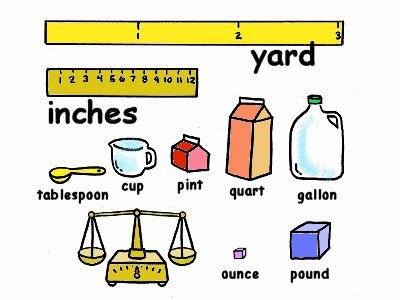
Old methods of measurements include:
a. Use of part of body to measure length or distances, such as pace, span, cubit and foot.
b. Muscles for weight
c. Shadow clock for time.
These old methods are not uniform and they are unreliable, because they are not the same for everybody. There is needs for modern standard method of measurements which will give (a) accuracy of measurement (b)uniformity of measurement (c) reliability of measurement.
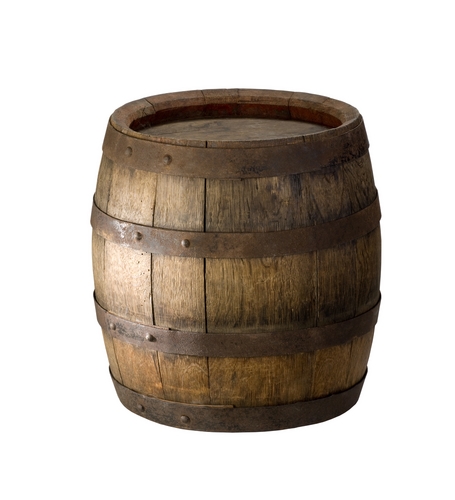
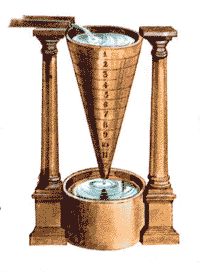
img]http://www.penwriteonline.com/library1/ ... _small.jpg[/img]
EVALUATION
a. Enumerate the need for standard measurement
b. Mention the old methods of measurement
further studies
http://www.historyworld.net/wrldhis/pla ... oryid=ac07
practice test
http://www.funtrivia.com/playquiz/quiz1 ... 04ac0.html
http://www.funtrivia.com/newflash/trivia.cfm?qid=174809
LESSON 7
MAIN TOPIC: Measurement
SPECIFIC TOPIC: Measuring Devices
REFERENCE BOOK: Nigerian Integrated Service Project, Pupils textbook 2 by STAN
PERFORMANCE OBJECTIVE: At the end of the lesson the students should be able to:
a. Mention the measuring instruments
b. State the functions of the measuring instruments
CONTENT: Measuring Instrument
Measuring instruments are used to measure things. The values of the measurements are recorded to the smallest division on the instrument. There are common units for measurement which one used all over the world. This is the international system of units also known as SI units.
Time: The old methods of measuring time are the shadows clock, candle clock hour glass, Egyptian water clock etc are not reliable. The modern and reliable instrument is the pendulum clock, quartz crystal clock, and atomic clock. Quartz and atomic are used by astronomers for timing the movement of stars in the sky, quartz crystal watches are the ones we use for our day to day activities.
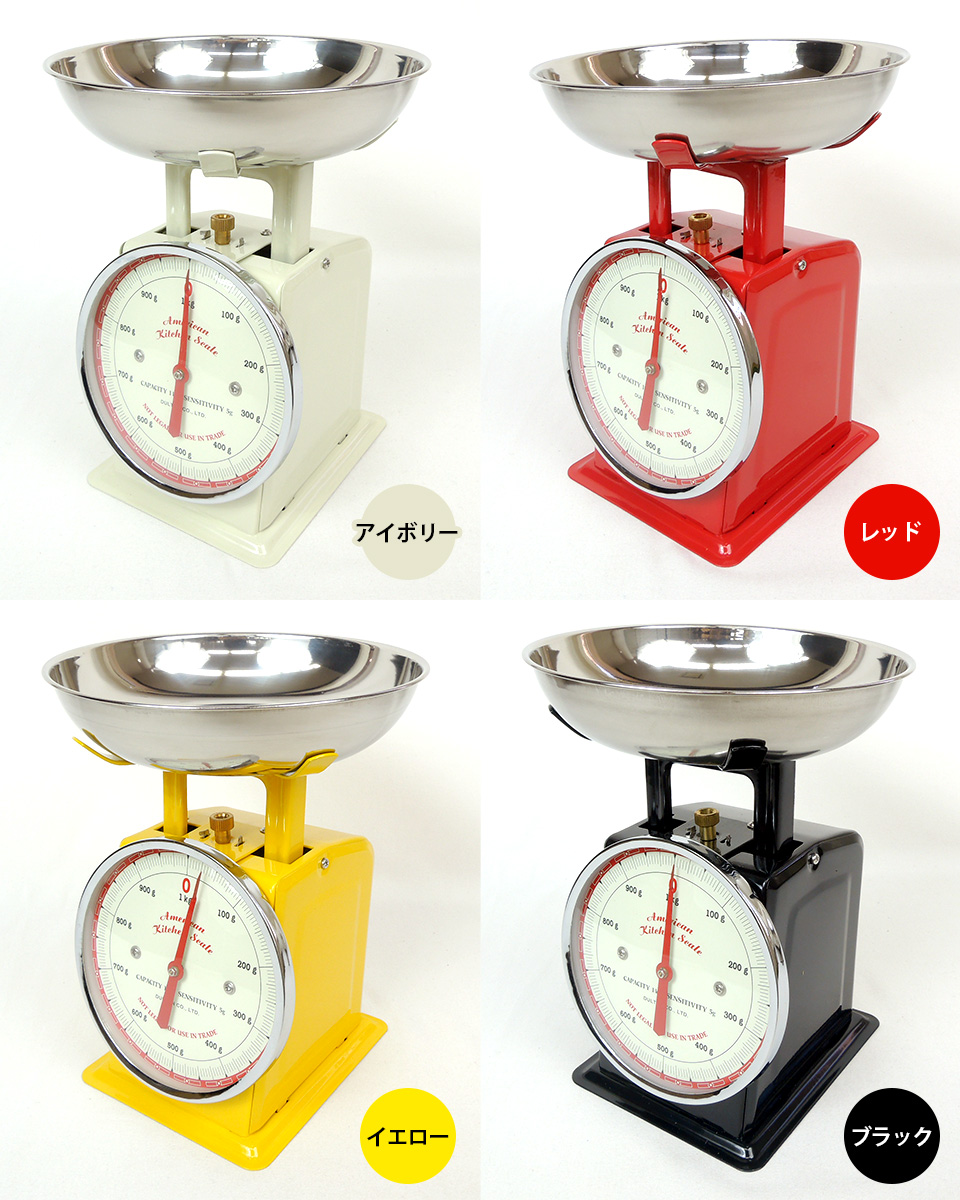
The SI unit of time is seconds.
60second = 1minute
60minutes = 1hour
Mass is the quantity of matter contained in a substance. The SI unit of mass is kilogram (kg). The SI unit of weight is Newton N
1kilogram (kg) = 1000grammes (g)
10milligrammes mg = 1centigrammes (cg)
10centigrammes (cg) = 1decigramme (dg)
10decigram = 1gramme
1gramm (g) = 1000milligrammes (mg)
1milligramme (mg) = 1000microgrammes (Ng)
EVALUATION
a. Define measuring instrument
b. Mention the measuring instruments
c. State the SI units of mass, weight, time etc
ASSIGNMENT: Write five(5) measuring instrument
further studies
http://visual.merriam-webster.com/scien ... evices.php
http://www.ehow.com/info_8179241_measur ... ience.html
http://www.smashinglists.com/10-early-f ... g-devices/
http://www.simetric.co.uk/sibasis.htm
practice test
http://www.kwiznet.com/p/takeQuiz.php?C ... 37&Num=3.5
http://www.school-for-champions.com/sci ... mental.htm
http://www.school-for-champions.com/sci ... weight.htm
LESSON 8
TOPIC: CRUDE OIL AND PETROCHEMICALS
CONTENT: 1. Meaning of Crude Oil.
2. Refining of Crude Oil and Petrochemicals
3. Importance of Crude Oil and Petrochemicals
MEANING OF CRUDE OIL
Crude oil which is also referred to as petroleum is a naturally occurring, flammable liquid consisting of a complex mixture of hydrocarbons of various molecular weights and other liquid organic compounds, that are found in geologic formations beneath the Earth's surface which occurs naturally in the ground and was formed millions of years ago. It is recovered mostly through oil drilling. This latter stage comes after the studies of structural geology (at the reservoir scale), sedimentary basin analysis, and reservour characterization (mainly in terms of porosity and permeable structures). It is refined and separated, most easily by boiling point, into a large number of consumer products, from petrol and kerosene to asphalt and chemical reagents used to make plastics and pharmaceuticals . It is used in manufacturing a wide variety of materials.
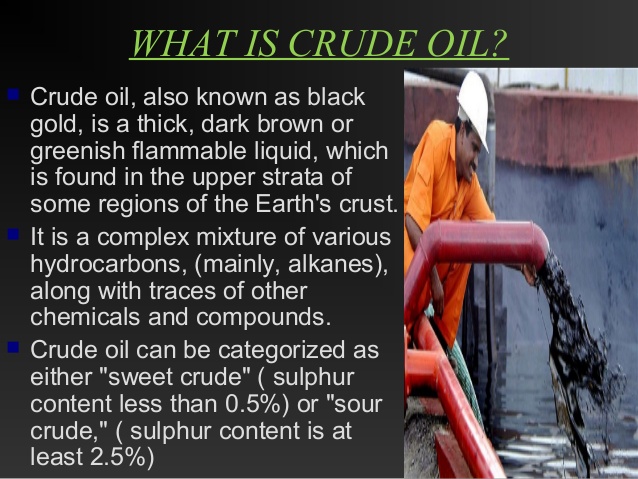
SAMPLES OF CRUDE OIL
From the diagram above, it shows that crude oil varies greatly in appearance depending on its composition. It is usually black or dark brown (although it may be yellowish, reddish, or even greenish) viscous liquid. Hence, crude oil varies from oilfield to oilfield in colour and composition, from a pale yellow low viscosity liquid to heavy black 'treacle' consistencies.
PETROCHEMICALS
Petrochemicals are chemicals made from the by-products of petroleum (crude oil) and natural gas. Petroleum and natural gas are made up of hydrocarbon molecules, which are comprised of one or more carbon atoms, to which hydrogen atoms are attached.
Petroleum and natural gas are increasingly used to produce many organic compounds. Examples of these organic compounds are ethanol, ethane, propanol, benzene and toluene. These small molecule organic compounds are in turn used to make large molecular organic compounds like plastics, synthetic rubber, and detergents, insecticides and synthetic fibres like Dacron and nylon which has made an impact in manufacturing industries.
Only about five percent of the oil and gas consumed each year is needed to make all the petrochemical products.
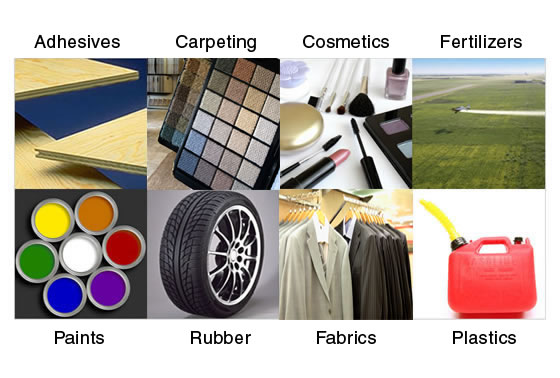
REFINING OF CRUDE OIL
Refining is the process of preparation of useful products such as petrol, kerosene, diesel and lubricating oil from crude oil.
Crude oil and natural gas are extracted from the ground, on land or under the oceans, by sinking an oil well and are then transported by pipeline and/or ship to refineries where their components are processed into refined products. Crude oil and natural gas are of little use in their raw state; their value lies in what is created from them: fuels, lubricating oils, waxes, asphalt, petrochemicals and pipeline quality natural gas.
An oil refinery is an organised and coordinated arrangement of manufacturing processes designed to produce physical and chemical changes in crude oil to convert it into everyday products like petrol, diesel, lubricating oil, fuel oil and bitumen.
As crude oil comes from the well it contains a mixture of hydrocarbon compounds and relatively small quantities of other materials such as oxygen, nitrogen, sulphur, salt and water. In the refinery, most of these non - hydrocarbon substances are removed and the oil is broken down into its various components, and blended into useful products through the process of fractional distillation
The fractions are further treated to convert them into mixtures of more useful saleable products by various methods such as cracking, reforming, alkylation, polymerization and isomerisation. These mixtures of new compounds are then separated using methods such as fractionation and solvent extraction. Impurities are removed by various methods, e.g. dehydration, desalting, sulphur removal and hydro - treating. If the petrol containing sulphur is not removed or purified before it is used in an engine the exhaust will contain oxides of sulphur (SO2 AND SO3) which are poisonous gases to that will pollute the environment.
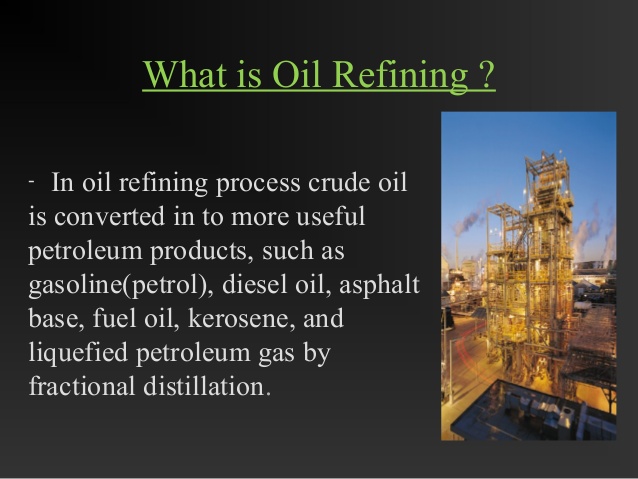
AN OIL REFINERY
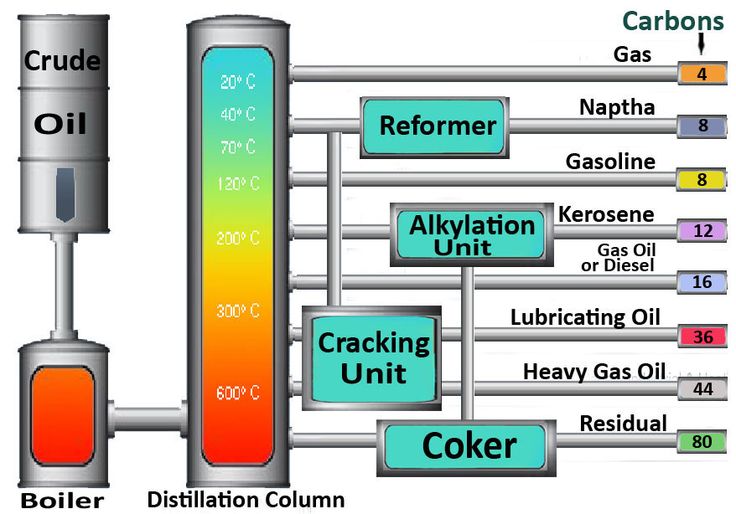

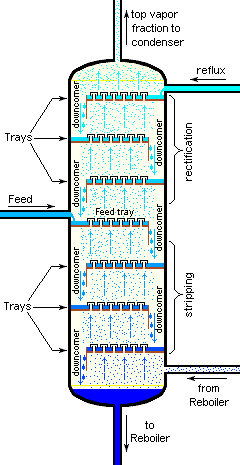
A TYPICAL INDUSTRIAL FRACTIONATING COLUMN
PRODUCTS OF FRACTIONAL DISTILLATION OF CRUDE OIL
The products of crude oil in order of how they are produced in the fractionating column are:
1. Natural gas (Methane gas and Propane gas)
2. Petrol or gasoline
3. Kerosene (paraffin)
4. Diesel oil
5. Lubricating oils wax
6. Asphalt and Bitumen
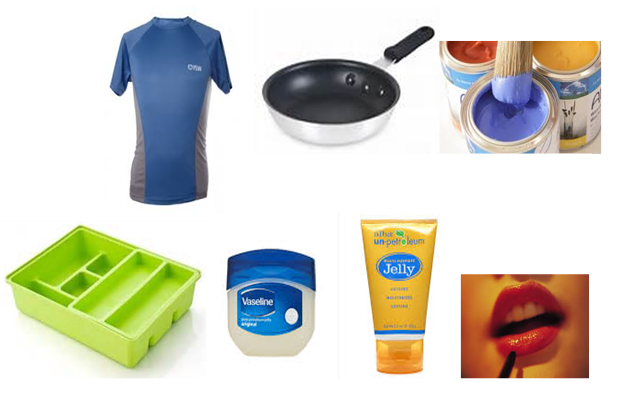
IMPORTANCE OF CRUDE OIL AND PETROL CHEMICALS
1. It serves as means of foreign exchange to countries that are involved in the refining and exportation of crude oil hence making their economy to be very buoyant.
2. It serves as a means of employment.
3. It made it possible for the movement of people from one place to another in cars, aeroplanes, ships, trains etc.
4. Materials gotten from crude oil are used for road constructions, production of concrete roof top, production of detergents, candle wax, body cream etc
5. Petroleum products like kerosene and natural gases are used for cooking
EVALUATION
1. What is crude oil?
2. What are petrochemical?
3. Describe how crude oil is refined.
4. What are the importance of crude oil and petrochemicals
https://youtu.be/gYnGgre83CI
ASSIGNMENT
1. Do activity 14.2 in chapter 14 on page 73 of Nigeria Basic Science project book two
2 List any ten (10) petroleum producing countries.
Further Studies 1
Further Studies 2
Practice Test
MAIN TOPIC: Measurement
SPECIFIC TOPIC: Need for standard measurement
REFERENCE BOOK: Nigerian Basic Science Project Pupils. Textbook 1 by STAN
PERFORMANCE OBJECTIVES: At the end of the lesson the students should be able to:
a. Enumerate the need for standard measurement
b. Mention old methods of measurement
CONTENT: Measurement
Measurement involving distances, volume of liquid, gases, solid, height, weight or masses of particular objects, and the time duration for certain events such as sports or the amount of heat energy in objects are all vital to our daily activities .

Old methods of measurements include:
a. Use of part of body to measure length or distances, such as pace, span, cubit and foot.
b. Muscles for weight
c. Shadow clock for time.
These old methods are not uniform and they are unreliable, because they are not the same for everybody. There is needs for modern standard method of measurements which will give (a) accuracy of measurement (b)uniformity of measurement (c) reliability of measurement.


img]http://www.penwriteonline.com/library1/ ... _small.jpg[/img]
EVALUATION
a. Enumerate the need for standard measurement
b. Mention the old methods of measurement
further studies
http://www.historyworld.net/wrldhis/pla ... oryid=ac07
practice test
http://www.funtrivia.com/playquiz/quiz1 ... 04ac0.html
http://www.funtrivia.com/newflash/trivia.cfm?qid=174809
LESSON 7
MAIN TOPIC: Measurement
SPECIFIC TOPIC: Measuring Devices
REFERENCE BOOK: Nigerian Integrated Service Project, Pupils textbook 2 by STAN
PERFORMANCE OBJECTIVE: At the end of the lesson the students should be able to:
a. Mention the measuring instruments
b. State the functions of the measuring instruments
CONTENT: Measuring Instrument
Measuring instruments are used to measure things. The values of the measurements are recorded to the smallest division on the instrument. There are common units for measurement which one used all over the world. This is the international system of units also known as SI units.
Time: The old methods of measuring time are the shadows clock, candle clock hour glass, Egyptian water clock etc are not reliable. The modern and reliable instrument is the pendulum clock, quartz crystal clock, and atomic clock. Quartz and atomic are used by astronomers for timing the movement of stars in the sky, quartz crystal watches are the ones we use for our day to day activities.

The SI unit of time is seconds.
60second = 1minute
60minutes = 1hour
Mass is the quantity of matter contained in a substance. The SI unit of mass is kilogram (kg). The SI unit of weight is Newton N
1kilogram (kg) = 1000grammes (g)
10milligrammes mg = 1centigrammes (cg)
10centigrammes (cg) = 1decigramme (dg)
10decigram = 1gramme
1gramm (g) = 1000milligrammes (mg)
1milligramme (mg) = 1000microgrammes (Ng)
EVALUATION
a. Define measuring instrument
b. Mention the measuring instruments
c. State the SI units of mass, weight, time etc
ASSIGNMENT: Write five(5) measuring instrument
further studies
http://visual.merriam-webster.com/scien ... evices.php
http://www.ehow.com/info_8179241_measur ... ience.html
http://www.smashinglists.com/10-early-f ... g-devices/
http://www.simetric.co.uk/sibasis.htm
practice test
http://www.kwiznet.com/p/takeQuiz.php?C ... 37&Num=3.5
http://www.school-for-champions.com/sci ... mental.htm
http://www.school-for-champions.com/sci ... weight.htm
LESSON 8
TOPIC: CRUDE OIL AND PETROCHEMICALS
CONTENT: 1. Meaning of Crude Oil.
2. Refining of Crude Oil and Petrochemicals
3. Importance of Crude Oil and Petrochemicals
MEANING OF CRUDE OIL
Crude oil which is also referred to as petroleum is a naturally occurring, flammable liquid consisting of a complex mixture of hydrocarbons of various molecular weights and other liquid organic compounds, that are found in geologic formations beneath the Earth's surface which occurs naturally in the ground and was formed millions of years ago. It is recovered mostly through oil drilling. This latter stage comes after the studies of structural geology (at the reservoir scale), sedimentary basin analysis, and reservour characterization (mainly in terms of porosity and permeable structures). It is refined and separated, most easily by boiling point, into a large number of consumer products, from petrol and kerosene to asphalt and chemical reagents used to make plastics and pharmaceuticals . It is used in manufacturing a wide variety of materials.

SAMPLES OF CRUDE OIL
From the diagram above, it shows that crude oil varies greatly in appearance depending on its composition. It is usually black or dark brown (although it may be yellowish, reddish, or even greenish) viscous liquid. Hence, crude oil varies from oilfield to oilfield in colour and composition, from a pale yellow low viscosity liquid to heavy black 'treacle' consistencies.
PETROCHEMICALS
Petrochemicals are chemicals made from the by-products of petroleum (crude oil) and natural gas. Petroleum and natural gas are made up of hydrocarbon molecules, which are comprised of one or more carbon atoms, to which hydrogen atoms are attached.
Petroleum and natural gas are increasingly used to produce many organic compounds. Examples of these organic compounds are ethanol, ethane, propanol, benzene and toluene. These small molecule organic compounds are in turn used to make large molecular organic compounds like plastics, synthetic rubber, and detergents, insecticides and synthetic fibres like Dacron and nylon which has made an impact in manufacturing industries.
Only about five percent of the oil and gas consumed each year is needed to make all the petrochemical products.

REFINING OF CRUDE OIL
Refining is the process of preparation of useful products such as petrol, kerosene, diesel and lubricating oil from crude oil.
Crude oil and natural gas are extracted from the ground, on land or under the oceans, by sinking an oil well and are then transported by pipeline and/or ship to refineries where their components are processed into refined products. Crude oil and natural gas are of little use in their raw state; their value lies in what is created from them: fuels, lubricating oils, waxes, asphalt, petrochemicals and pipeline quality natural gas.
An oil refinery is an organised and coordinated arrangement of manufacturing processes designed to produce physical and chemical changes in crude oil to convert it into everyday products like petrol, diesel, lubricating oil, fuel oil and bitumen.
As crude oil comes from the well it contains a mixture of hydrocarbon compounds and relatively small quantities of other materials such as oxygen, nitrogen, sulphur, salt and water. In the refinery, most of these non - hydrocarbon substances are removed and the oil is broken down into its various components, and blended into useful products through the process of fractional distillation
The fractions are further treated to convert them into mixtures of more useful saleable products by various methods such as cracking, reforming, alkylation, polymerization and isomerisation. These mixtures of new compounds are then separated using methods such as fractionation and solvent extraction. Impurities are removed by various methods, e.g. dehydration, desalting, sulphur removal and hydro - treating. If the petrol containing sulphur is not removed or purified before it is used in an engine the exhaust will contain oxides of sulphur (SO2 AND SO3) which are poisonous gases to that will pollute the environment.

AN OIL REFINERY



A TYPICAL INDUSTRIAL FRACTIONATING COLUMN
PRODUCTS OF FRACTIONAL DISTILLATION OF CRUDE OIL
The products of crude oil in order of how they are produced in the fractionating column are:
1. Natural gas (Methane gas and Propane gas)
2. Petrol or gasoline
3. Kerosene (paraffin)
4. Diesel oil
5. Lubricating oils wax
6. Asphalt and Bitumen

IMPORTANCE OF CRUDE OIL AND PETROL CHEMICALS
1. It serves as means of foreign exchange to countries that are involved in the refining and exportation of crude oil hence making their economy to be very buoyant.
2. It serves as a means of employment.
3. It made it possible for the movement of people from one place to another in cars, aeroplanes, ships, trains etc.
4. Materials gotten from crude oil are used for road constructions, production of concrete roof top, production of detergents, candle wax, body cream etc
5. Petroleum products like kerosene and natural gases are used for cooking
EVALUATION
1. What is crude oil?
2. What are petrochemical?
3. Describe how crude oil is refined.
4. What are the importance of crude oil and petrochemicals
https://youtu.be/gYnGgre83CI
ASSIGNMENT
1. Do activity 14.2 in chapter 14 on page 73 of Nigeria Basic Science project book two
2 List any ten (10) petroleum producing countries.
Further Studies 1
Further Studies 2
Practice Test
WEEK 4
LESSON 9
MAIN TOPIC: machine
SPECIFIC TOPIC: Definition of machine
REFERENCE BOOK: Nigeria Basic Science Project, Pupils textbook2 by STAN
PERFORMANCE OBJECTIVE: At the end f the lesson the students should be able to:
a. Define a simple machine
b. Mention types of a machine
CONTENT: Simple machine
Simple machines are the device that makes work easier and more convenient for us to do work. Machines make work easier by reducing the amount of force that must be applied in order to move a load or accomplish a task. Examples of common machines that we use at home are broom, bottle opener, tin cutter, knife, screw driver, hoe etc

Types of machine
There are simple machines and also complex machines. Examples of simple machine: hoe, broom, axes, knives, screw, wheel and axle.

Examples of complex machine include a sewing machine, a pump, car jack etc

EVALUATION
a. Define simple machine
b. Mention the two (2) types of machines
ASSIGNMENT: Mention two (2) types of simple machine
further studies
http://www.mikids.com/Smachines.htm
http://www.ehow.com/list_6387889_types- ... -home.html
practice test
http://www.mikids.com/SimpleMachines/smquiz.htm
http://www.softschools.com/quizzes/scie ... iz392.html
http://www.quia.com/quiz/344487.html?AP_rand=494591705
LESSON 10
MAIN TOPIC: Machines
SPECIFIC TOPIC: Simple machine (types)
REFERENCE BOOK: Nigeria Basic Science Project, Pupils textbook2 by STAN
PERFORMANCE OBJECTIVE: At the end of the lesson the students should be able to:
a. Mention the types of simple machine
b. Describe the types of simple machines
CONTENT: Types of simple machine

The types of simple machine, are the following:
a. Lever
b. Inclined plane
c. Wedges
d. Screws
e. Pulley
f. Wheel and axle
Lever: is a simple machine that is used to move objects, there are three(3) types of lever (i) first class lever (ii) second class lever (iii) third class lever. All levers have three parts the load arm, the effort arm and the fulcrum. The arrangement of first class lever is load fulcrum and effort.
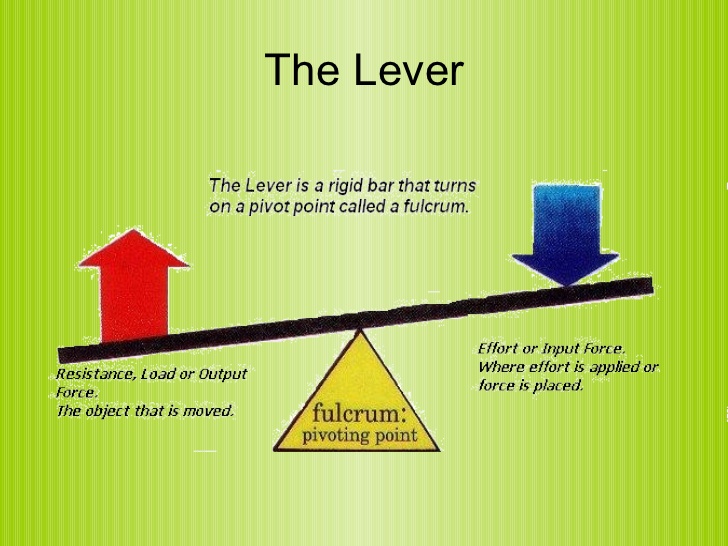
Examples of machines under this lever are: seesaw, pliers, pincers, spade, pairs of scissors etc
The arrangement of the second class lever
Examples are wheel barrow, nutcracker etc

Third class lever's arrangement
Examples are long shovel, fishing road, table knife, sugar tongs etc
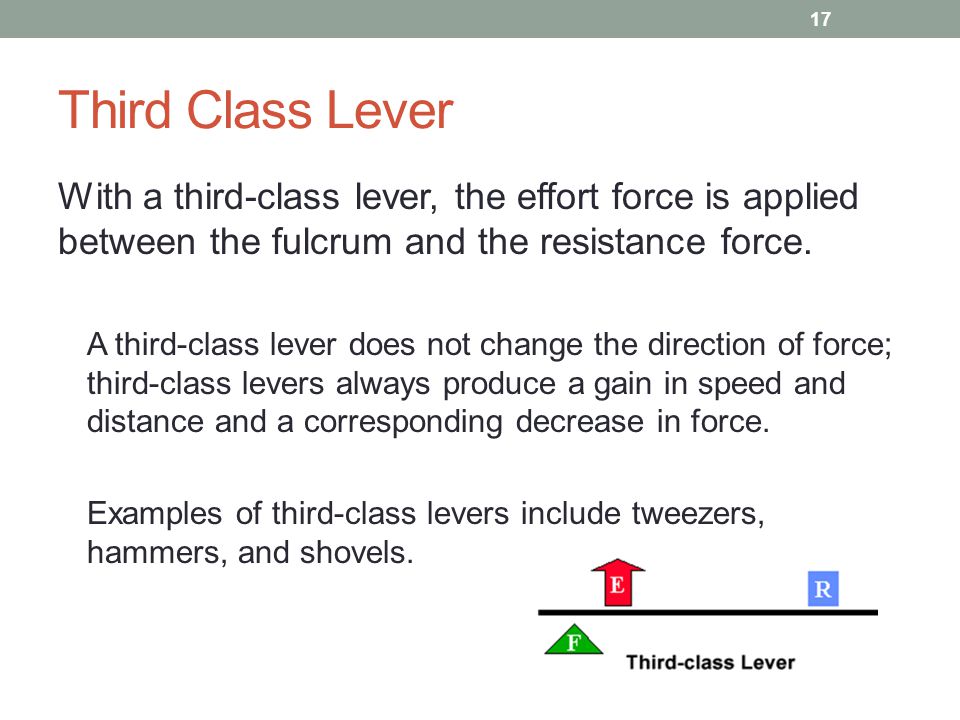

Wedge: is a simple machine that works on the principle of inched plane, lifting, pushing, tightening, splitting objects. Knife blades, chisels, pin, blades of axe are all examples of wedge. Carpenters use wedge to tighten joint.
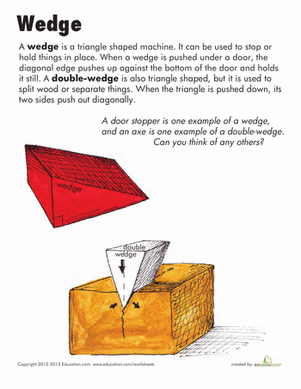
Screws: A screw is a long inclined plane, or a long wedges. A screw is an inclined planed wrapped around a bar and other materials. Each time the screw makes a complete turn it moves a load to a certain distance along the screw.
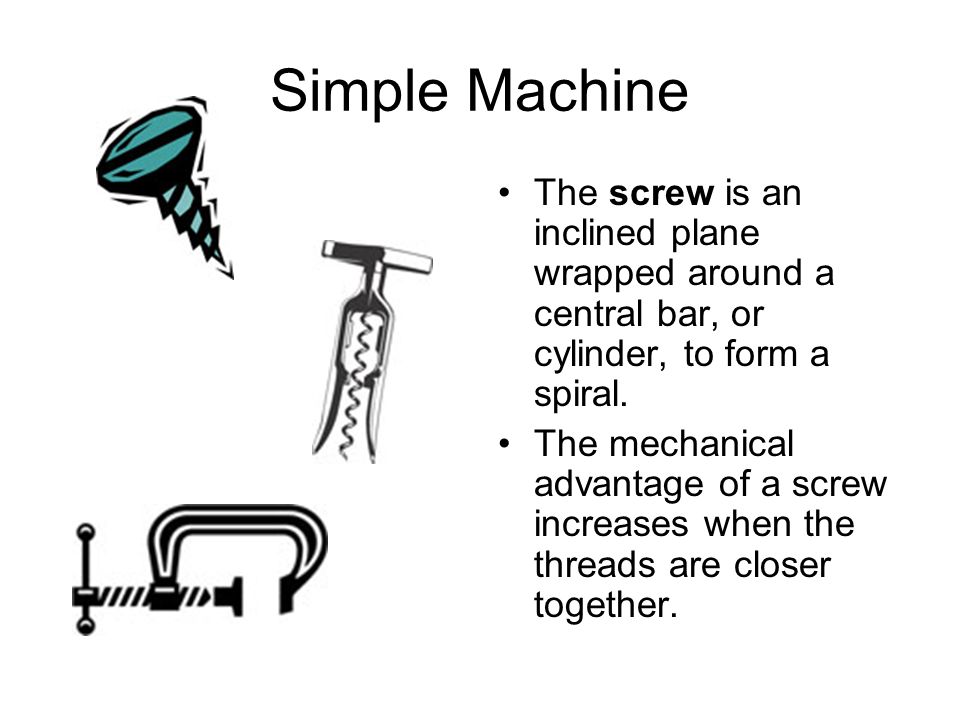
Pulley: is a simple machine that changes the direction or amount of a force. It is a small wheel with a groove along its rim and a rope around its wheel. A pulley may be fixed or movable.

Wheel and axle: A wheel and axle form a simple line with a wheel that turns a post. The part is called an axle. Wheels and axles are commonly seen on cars, train, tracks and bicycles.

https://drive.google.com/file/d/0Bz3Mh6 ... sp=sharing
EVALUATION
a. Mention the types of simple machines
b. Describe the types of machine
further studies
http://www.superteacherworksheets.com/s ... _WMTNF.pdf
http://www.kidskonnect.com/subject-inde ... hines.html
http://www.ehow.com/info_7969543_homema ... -kids.html
practice test
http://je012.k12.sd.us/3rd%20grade/Quiz.htm
http://www.softschools.com/quizzes/scie ... iz392.html
LESSON 11
MAIN TOPIC : Maintenance of Simple Machine
SPECIFIC TOPIC : Meaning of maintenance
REFERENCE BK : Basic Science Project Pupils Textbook 2
PERFORMANCE OBJECTIVE: At the end of the lesson the students should be able to:
(1) Explain maintenance
(2)Explain Velocity ratio of a machine
CONTENT
Maintenance is the act of keeping our machines in good working condition all the time and to prolong their live space. Some of the energy produced by the machine is available for doing useful work. Some energy is converted into heat as friction between the moving parts, this reduces the efficiency of the machine.
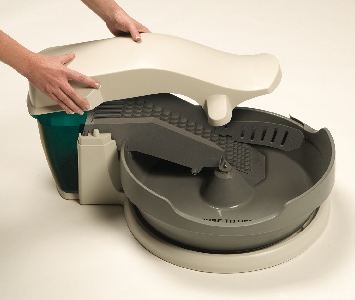
Velocity is the rate of linear motion of a body in a particular direction. Velocity can be constant, or it can be accelerated. Constant, or uniform, velocity can be determined simply by dividing the distance covered by the time taken to travel that distance.
Velocity ratio (V.R) can be calculated with this formula
Velocity Ratio= Input distance
Output distance
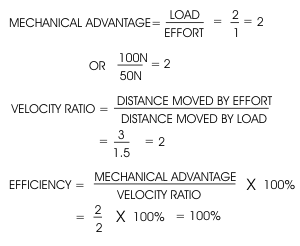
Example 1. A pulley system lift a load 5M when the rope is pulled 10M by two people. What is the velocity ratio of the pulley system?
Solution
V.R =input d / Output d
=10/5
=2
EVALUATION/CLASSWORK
Define maintenance
Explain efficiency of a machine
further studies
http://www.slideshare.net/terencesongki ... -singapore
LESSON 12
MAIN TOPIC : Maintenance
SPECIFIC TOPIC : Maintenance of Machine
REFERENCE BK : Basic Science Project Pupils Textbook 2
PERFORMANCE OBJECTIVE: At the end of the lesson the students should be able to:
(1) Maintenance a simple machine
(2)Explain efficiency of a machine
CONTENT
Maintenance of Simple Machine
1. Greasing the moving parts of the machine regularly.
2. Regular removal of dust and dirt from a machine is necessary to ensure good performance of the machine
3. Regular checking and changing of the engine oil of our machine is an important practice recommended for all users of machine
4. When an engine is not in use, we must check and warm it up to prevent rusting.
5. When any machine is faulty, and the fault detected, they should immediately be corrected.
6. All machines are to be used only for the purpose they are meant for
7. All machines should be used according to makers or manufacturer's instruction.
The efficiency of a machine is expressed as the ratio of energy output to the energy input. The efficiency is always expressed in percentage. Therefore:
Efficiency= energy output x 100
Energy input 1
OR
Efficiency = Mechanical advantage x 100
Velocity ratio 1
Efficiency of a machine is always less than 100%
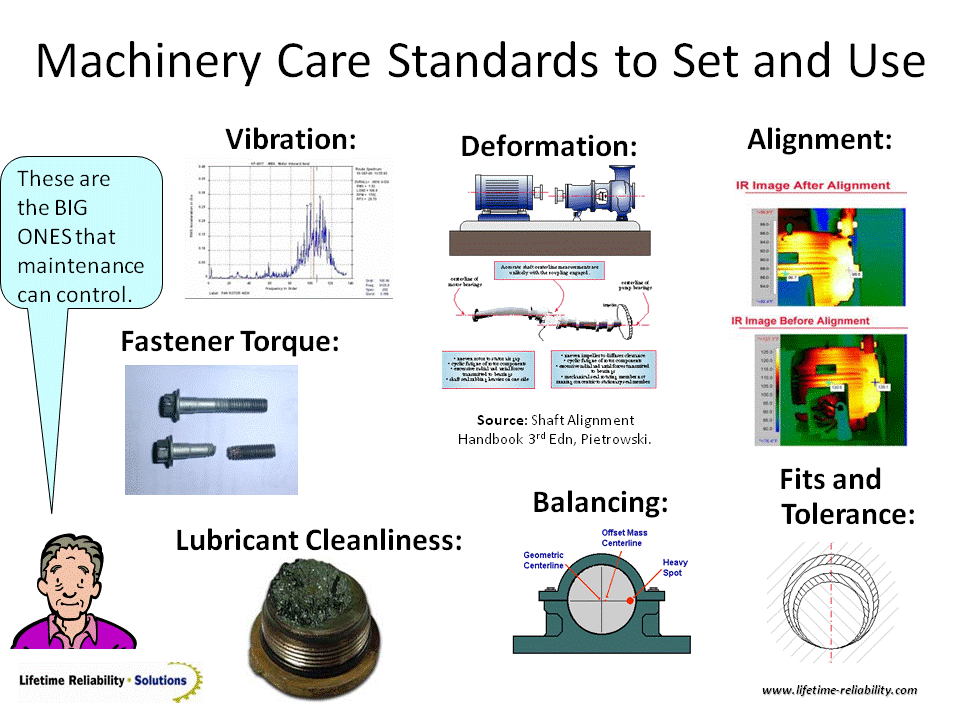
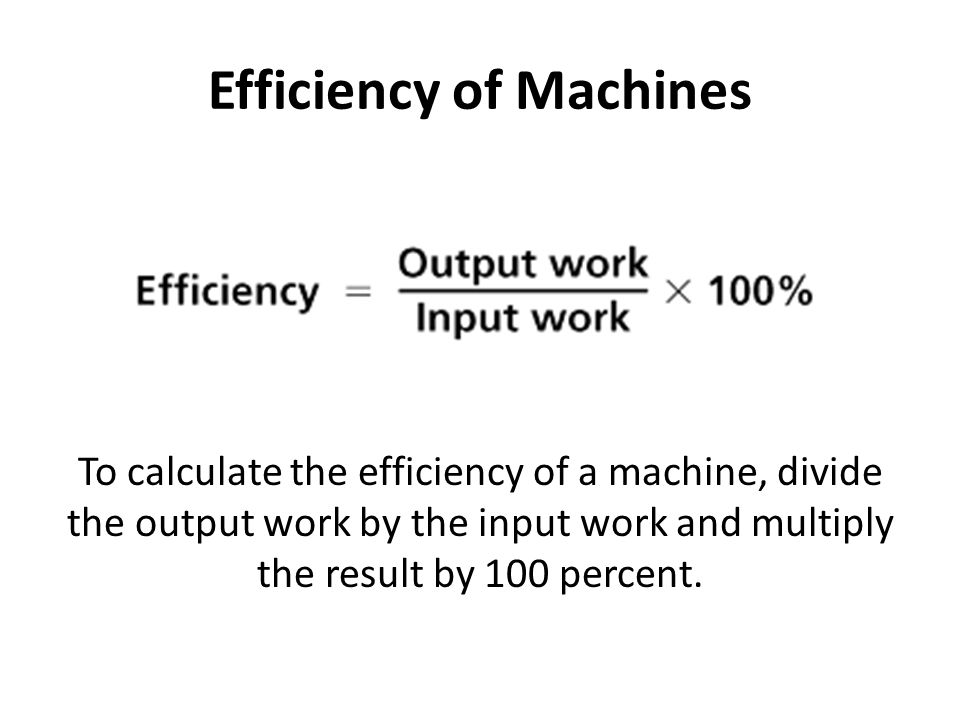
Example 1. If the mechanical advantage of a machine is 2 and its velocity ratio is 4.Calculate the efficiency of the machine?
E= 2 x 100
4 x 1
= 50%
EVALUATION/CLASSWORK
Define maintenance
Explain efficiency of a machine
further studies
http://www.ehow.com/how_7307101_calcula ... chine.html
http://www.leydenscience.org/physics/work/effic.htm
LESSON 13
TOPIC: SIMPLE MACHINE
CONTENT: 1. Meaning of simple machine.
2. Meaning of Wheel and Axle
3. Operation of Wheel
SUB-TOPIC 1: SIMPLE MACHINES
An arrangement by which work can be done conveniently on a load or against a resistance is known as machine
Simple machine is a machine in its simplest form. They are devices that use energy to do work. The work is being done by the machine when a small effort is used to overcome a large resistance.
Simple machine can be classified into different categories namely the lever, the pulley, the inclined plane, the wedge, the wheel and axle, the screw, the hydraulic press.

Some common examples of simple machines are the shovel (a form of lever), the pulley at the top of a flagpole, the steering wheel of an automobile (a form of wheel and axle), and the wheelchair ramp (a form of inclined plane). An everyday example of a complex machine is the can opener, which combines a lever (the hinged handle), a wheel and axle (the turning knob), and a wedge (the sharpened cutting disk).
WHEEL AND AXLE
A wheel and axle is really two machines in one because you can use each part in different ways. The first way is to roll something along. It is a simple machine consisting of a wheel mounted rigidly upon an axle or drum of smaller diameter, the wheel and the axle having the same axis. It is fundamentally a form of lever, the center common to both the wheel and the axle corresponding to the fulcrum, the radii of the two parts to the arms. The wheel & axle device is similar to the lever simple machine. The wheel acts as the lever and the axle acts as a fulcrum. The lever applies force to the fulcrum, causing something to move.
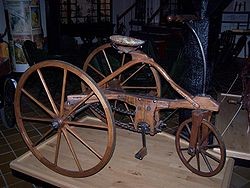
The effort (applied to the wheel) needed to overcome the resistance (acting upon the axle) is relatively small. The mechanical advantage gained by the use of the wheel is equal to the ratio of the radius of the wheel to the radius of the axle.
The wheel and axle is not as efficient as the lever, since a part of the effort must be used to overcome the resistance of friction. In common use, a crank or handle often takes the place of the wheel.
Applications of the wheel and axle are numerous in everyday life; examples are the steering wheel of an automobile, the doorknob, and the windlass. The effort is applied through a greater distance than is the resistance, but this effort is applied conveniently in a circle.
In the treadmill, the windmill, and the waterwheel, the wheel and axle led the way to the utilization of power in modern machinery. Clockmakers were pioneers in devising ways of transmitting and controlling power by the use of the wheel and axle.
Examples of other machines which work on wheel and axle principle are
1. The brace used by carpenters to bore holes on wood.
2. Screw driver
3. Box spanner
4. Ceiling fan, etc.
OPERATION OF WHEEL
The wheel is a device that enables efficient movement of an object across a surface where there is a force pressing the object to the surface. Common examples are a cart pulled by a horse, and the rollers on an aircraft flap mechanism.
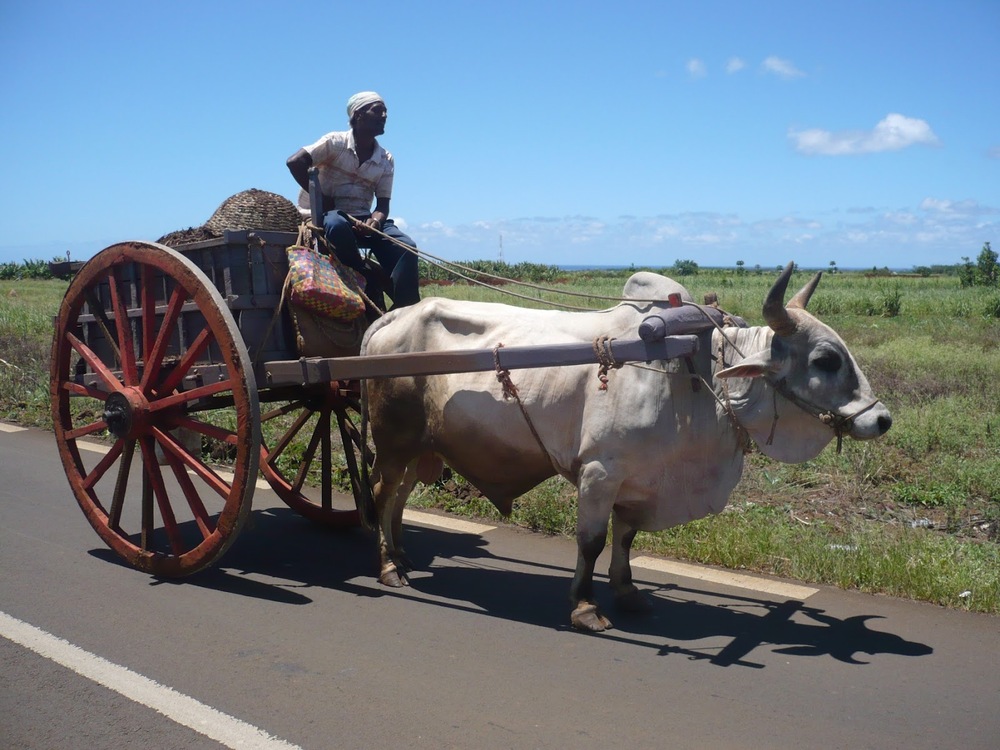
A pair wheels on a cart
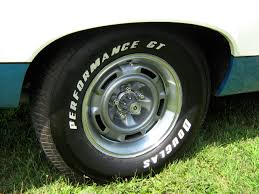
An automobile wheel

A driving wheel on a steam locomotive
Wheels are used in conjunction with axles, either the wheel turns on the axle, or the axle turns in the object body. The mechanics are the same in either case. The wheel alone is not a machine, but when attached to an axle in conjunction with bearing, it forms the wheel and axle, one of the simple machines. A driven wheel is an example of a wheel and axle.
EVALUATION
1. What are simple machines?
2. Describe a wheel and axle
3. Give any five examples of wheel and axle
4. How does a wheel operate?
ASSIGNMENT
1. Differentiate between a wheel and an axle
2. With the aid of diagrams explain the three classes of lever giving typical examples.
MAIN TOPIC: machine
SPECIFIC TOPIC: Definition of machine
REFERENCE BOOK: Nigeria Basic Science Project, Pupils textbook2 by STAN
PERFORMANCE OBJECTIVE: At the end f the lesson the students should be able to:
a. Define a simple machine
b. Mention types of a machine
CONTENT: Simple machine
Simple machines are the device that makes work easier and more convenient for us to do work. Machines make work easier by reducing the amount of force that must be applied in order to move a load or accomplish a task. Examples of common machines that we use at home are broom, bottle opener, tin cutter, knife, screw driver, hoe etc

Types of machine
There are simple machines and also complex machines. Examples of simple machine: hoe, broom, axes, knives, screw, wheel and axle.

Examples of complex machine include a sewing machine, a pump, car jack etc

EVALUATION
a. Define simple machine
b. Mention the two (2) types of machines
ASSIGNMENT: Mention two (2) types of simple machine
further studies
http://www.mikids.com/Smachines.htm
http://www.ehow.com/list_6387889_types- ... -home.html
practice test
http://www.mikids.com/SimpleMachines/smquiz.htm
http://www.softschools.com/quizzes/scie ... iz392.html
http://www.quia.com/quiz/344487.html?AP_rand=494591705
LESSON 10
MAIN TOPIC: Machines
SPECIFIC TOPIC: Simple machine (types)
REFERENCE BOOK: Nigeria Basic Science Project, Pupils textbook2 by STAN
PERFORMANCE OBJECTIVE: At the end of the lesson the students should be able to:
a. Mention the types of simple machine
b. Describe the types of simple machines
CONTENT: Types of simple machine

The types of simple machine, are the following:
a. Lever
b. Inclined plane
c. Wedges
d. Screws
e. Pulley
f. Wheel and axle
Lever: is a simple machine that is used to move objects, there are three(3) types of lever (i) first class lever (ii) second class lever (iii) third class lever. All levers have three parts the load arm, the effort arm and the fulcrum. The arrangement of first class lever is load fulcrum and effort.

Examples of machines under this lever are: seesaw, pliers, pincers, spade, pairs of scissors etc
The arrangement of the second class lever
Examples are wheel barrow, nutcracker etc

Third class lever's arrangement
Examples are long shovel, fishing road, table knife, sugar tongs etc


Wedge: is a simple machine that works on the principle of inched plane, lifting, pushing, tightening, splitting objects. Knife blades, chisels, pin, blades of axe are all examples of wedge. Carpenters use wedge to tighten joint.

Screws: A screw is a long inclined plane, or a long wedges. A screw is an inclined planed wrapped around a bar and other materials. Each time the screw makes a complete turn it moves a load to a certain distance along the screw.

Pulley: is a simple machine that changes the direction or amount of a force. It is a small wheel with a groove along its rim and a rope around its wheel. A pulley may be fixed or movable.

Wheel and axle: A wheel and axle form a simple line with a wheel that turns a post. The part is called an axle. Wheels and axles are commonly seen on cars, train, tracks and bicycles.

https://drive.google.com/file/d/0Bz3Mh6 ... sp=sharing
EVALUATION
a. Mention the types of simple machines
b. Describe the types of machine
further studies
http://www.superteacherworksheets.com/s ... _WMTNF.pdf
http://www.kidskonnect.com/subject-inde ... hines.html
http://www.ehow.com/info_7969543_homema ... -kids.html
practice test
http://je012.k12.sd.us/3rd%20grade/Quiz.htm
http://www.softschools.com/quizzes/scie ... iz392.html
LESSON 11
MAIN TOPIC : Maintenance of Simple Machine
SPECIFIC TOPIC : Meaning of maintenance
REFERENCE BK : Basic Science Project Pupils Textbook 2
PERFORMANCE OBJECTIVE: At the end of the lesson the students should be able to:
(1) Explain maintenance
(2)Explain Velocity ratio of a machine
CONTENT
Maintenance is the act of keeping our machines in good working condition all the time and to prolong their live space. Some of the energy produced by the machine is available for doing useful work. Some energy is converted into heat as friction between the moving parts, this reduces the efficiency of the machine.

Velocity is the rate of linear motion of a body in a particular direction. Velocity can be constant, or it can be accelerated. Constant, or uniform, velocity can be determined simply by dividing the distance covered by the time taken to travel that distance.
Velocity ratio (V.R) can be calculated with this formula
Velocity Ratio= Input distance
Output distance

Example 1. A pulley system lift a load 5M when the rope is pulled 10M by two people. What is the velocity ratio of the pulley system?
Solution
V.R =input d / Output d
=10/5
=2
EVALUATION/CLASSWORK
Define maintenance
Explain efficiency of a machine
further studies
http://www.slideshare.net/terencesongki ... -singapore
LESSON 12
MAIN TOPIC : Maintenance
SPECIFIC TOPIC : Maintenance of Machine
REFERENCE BK : Basic Science Project Pupils Textbook 2
PERFORMANCE OBJECTIVE: At the end of the lesson the students should be able to:
(1) Maintenance a simple machine
(2)Explain efficiency of a machine
CONTENT
Maintenance of Simple Machine
1. Greasing the moving parts of the machine regularly.
2. Regular removal of dust and dirt from a machine is necessary to ensure good performance of the machine
3. Regular checking and changing of the engine oil of our machine is an important practice recommended for all users of machine
4. When an engine is not in use, we must check and warm it up to prevent rusting.
5. When any machine is faulty, and the fault detected, they should immediately be corrected.
6. All machines are to be used only for the purpose they are meant for
7. All machines should be used according to makers or manufacturer's instruction.
The efficiency of a machine is expressed as the ratio of energy output to the energy input. The efficiency is always expressed in percentage. Therefore:
Efficiency= energy output x 100
Energy input 1
OR
Efficiency = Mechanical advantage x 100
Velocity ratio 1
Efficiency of a machine is always less than 100%


Example 1. If the mechanical advantage of a machine is 2 and its velocity ratio is 4.Calculate the efficiency of the machine?
E= 2 x 100
4 x 1
= 50%
EVALUATION/CLASSWORK
Define maintenance
Explain efficiency of a machine
further studies
http://www.ehow.com/how_7307101_calcula ... chine.html
http://www.leydenscience.org/physics/work/effic.htm
LESSON 13
TOPIC: SIMPLE MACHINE
CONTENT: 1. Meaning of simple machine.
2. Meaning of Wheel and Axle
3. Operation of Wheel
SUB-TOPIC 1: SIMPLE MACHINES
An arrangement by which work can be done conveniently on a load or against a resistance is known as machine
Simple machine is a machine in its simplest form. They are devices that use energy to do work. The work is being done by the machine when a small effort is used to overcome a large resistance.
Simple machine can be classified into different categories namely the lever, the pulley, the inclined plane, the wedge, the wheel and axle, the screw, the hydraulic press.

Some common examples of simple machines are the shovel (a form of lever), the pulley at the top of a flagpole, the steering wheel of an automobile (a form of wheel and axle), and the wheelchair ramp (a form of inclined plane). An everyday example of a complex machine is the can opener, which combines a lever (the hinged handle), a wheel and axle (the turning knob), and a wedge (the sharpened cutting disk).
WHEEL AND AXLE
A wheel and axle is really two machines in one because you can use each part in different ways. The first way is to roll something along. It is a simple machine consisting of a wheel mounted rigidly upon an axle or drum of smaller diameter, the wheel and the axle having the same axis. It is fundamentally a form of lever, the center common to both the wheel and the axle corresponding to the fulcrum, the radii of the two parts to the arms. The wheel & axle device is similar to the lever simple machine. The wheel acts as the lever and the axle acts as a fulcrum. The lever applies force to the fulcrum, causing something to move.

The effort (applied to the wheel) needed to overcome the resistance (acting upon the axle) is relatively small. The mechanical advantage gained by the use of the wheel is equal to the ratio of the radius of the wheel to the radius of the axle.
The wheel and axle is not as efficient as the lever, since a part of the effort must be used to overcome the resistance of friction. In common use, a crank or handle often takes the place of the wheel.
Applications of the wheel and axle are numerous in everyday life; examples are the steering wheel of an automobile, the doorknob, and the windlass. The effort is applied through a greater distance than is the resistance, but this effort is applied conveniently in a circle.
In the treadmill, the windmill, and the waterwheel, the wheel and axle led the way to the utilization of power in modern machinery. Clockmakers were pioneers in devising ways of transmitting and controlling power by the use of the wheel and axle.
Examples of other machines which work on wheel and axle principle are
1. The brace used by carpenters to bore holes on wood.
2. Screw driver
3. Box spanner
4. Ceiling fan, etc.
OPERATION OF WHEEL
The wheel is a device that enables efficient movement of an object across a surface where there is a force pressing the object to the surface. Common examples are a cart pulled by a horse, and the rollers on an aircraft flap mechanism.

A pair wheels on a cart

An automobile wheel

A driving wheel on a steam locomotive
Wheels are used in conjunction with axles, either the wheel turns on the axle, or the axle turns in the object body. The mechanics are the same in either case. The wheel alone is not a machine, but when attached to an axle in conjunction with bearing, it forms the wheel and axle, one of the simple machines. A driven wheel is an example of a wheel and axle.
EVALUATION
1. What are simple machines?
2. Describe a wheel and axle
3. Give any five examples of wheel and axle
4. How does a wheel operate?
ASSIGNMENT
1. Differentiate between a wheel and an axle
2. With the aid of diagrams explain the three classes of lever giving typical examples.
WEEK 5
LESSON 14
MAIN TOPIC: Immunization
SPECIFIC TOPIC: Meaning of Immunization
REFERENCE BOOKS: Nigerian Basic Science Project by STAN
PERFORMANCE OBJECTIVE: At the end of the lesson the students should be able to:
a. Define immunization
b. Explain immunity
CONTENT: Immunization
Immunization is the introduction of vaccines to protect people from certain dangerous diseases and infections. Doctors give vaccination or inoculations by injections against diseases like, measles, polio, tetanus, tuberculosis, diphtheria and whooping cough.

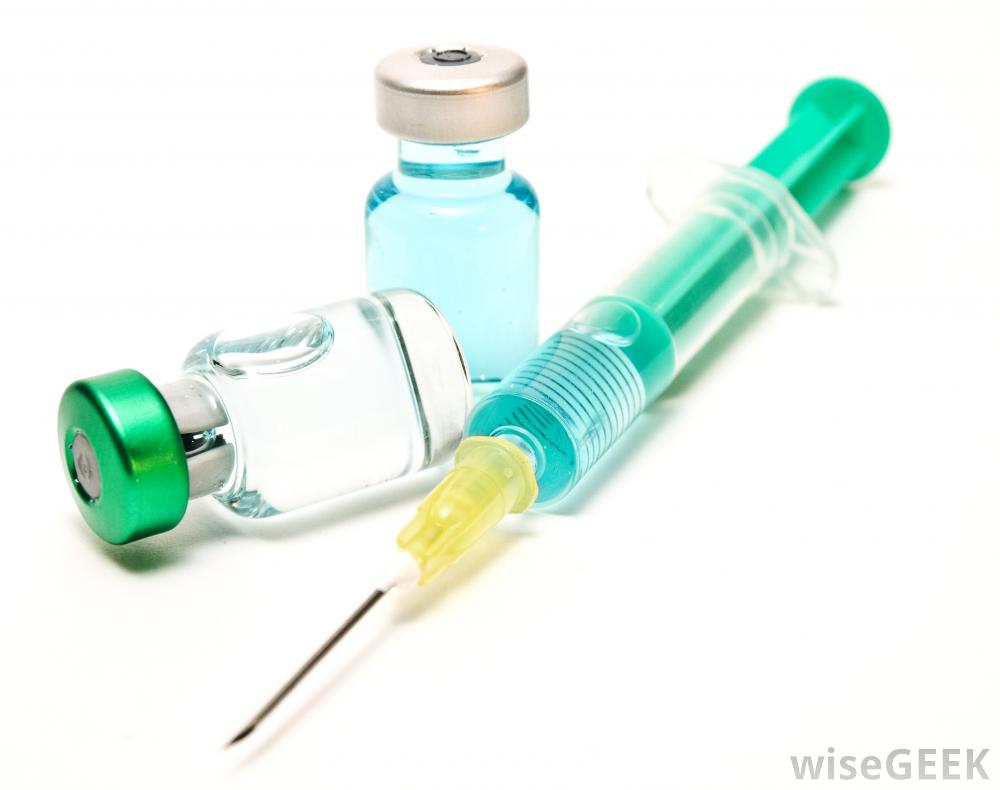
Immunity: The body acquires immunity against some diseases. Once the disease germ enters the body, antibodies are produced. The body antibodies will react and destroy the germs. Once the antibodies have been made once. Once the antibodies have been made the body will continue to make them easily to protect the body from the micro-organisms. The body is said to be immunized.
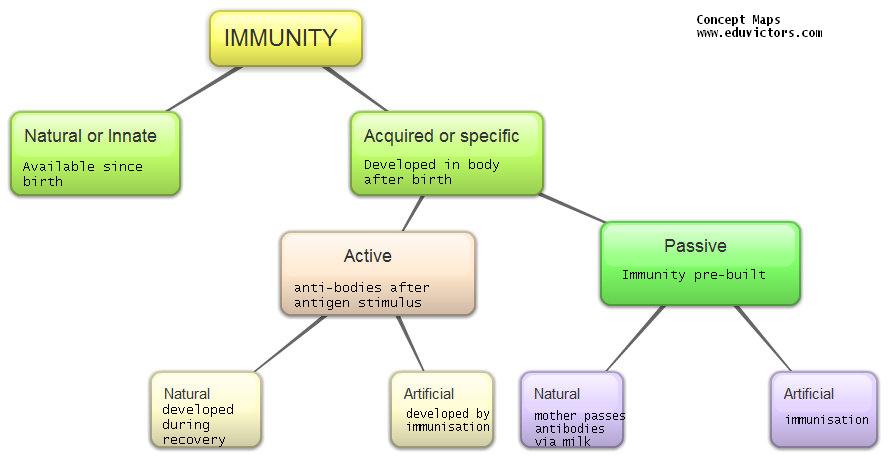
EVALUATION: The lesson is evaluated with the following questions.
a. Define immunization
b. Explain immunity
c. Mention immunization vaccines.
further studies
http://kidshealth.org/parent/general/bo ... mmune.html
http://www.cyh.com/HealthTopics/HealthT ... &id=2402#1
practice test
http://kidshealth.org/kid/htbw/_bfs_ISquizsource.html
LESSON 15
TOPIC: THE SCREW THREAD
CONTENT: 1. Meaning of a Screw
2. Parts of a Screw Thread
3. Operation of a Screw thread
4. Uses of Screw Thread
MEANING OF A SCREW
Screw, mechanical fastening device consisting essentially of an inclined plane wound spirally around a cylinder or a cone. The ridges formed by the winding planes are called threads, and depending on the intended use, the threads may be square, triangular, or rounded in cross section. The distance between two corresponding points on adjacent threads is called the pitch. If the thread is on the outside of a cylinder, it is called a screw or male thread, and if it is on the inside of a cylinder, as in the case of a common nut, it is called a female screw. Screws and bolts used in machines employ a cylindrical shaft with a constant inner or minor diameter, but wood screws and pipe threads are cut on a tapering cone.
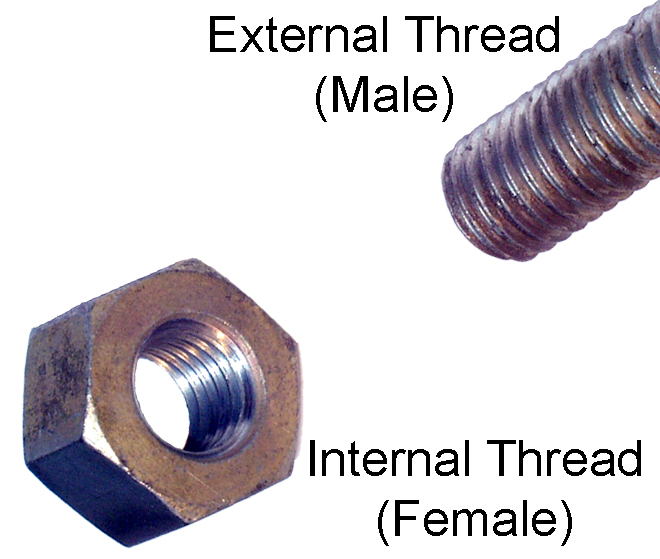
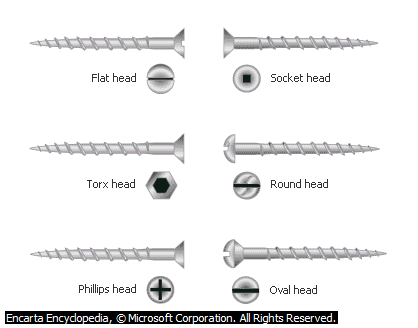
PARTS OF A SCREW THREAD
A screw thread is made of the following parts:
1. Thread or Lead
2. Pitch
3. Plane or Start

Lead: Is the distance along the screw's axis that is covered by one complete rotation of the screw (360°).
Pitch: Is the distance from the crest of one thread to the next. Because the vast majority of screw thread forms are single-start thread forms, their lead and pitch are the same.
Single-start- means that there is only one "ridge" wrapped around the cylinder of the screw's body. Each time that the screw's body rotates one turn (360°), it has advanced axially by the width of one ridge.
"Double-start" -means that there are two "ridges" wrapped around the cylinder of the screw's body Each time that the screw's body rotates one turn (360°), it has advanced axially by the width of two ridges.
OPERATION OF A SCREW THREAD
A screw thread, often shortened to thread, is a helical structure used to convert between rotational and linear movement or force. A screw thread is a ridge wrapped around a cylinder or cone in the form of a helix, with the former being called a straight thread and the latter called a tapered thread. More screw threads are produced each year than any other machine element.
The mechanical advantage of a screw thread depends on its lead, which is the linear distance the screw travels in one revolution. In most applications, the lead of a screw thread is chosen so that friction is sufficient to prevent linear motion being converted to rotary, which is so the screw does not slip even when linear force is applied so long as no external rotational force is present. This characteristic is essential to the vast majority of its uses. The tightening of a fastener's screw thread is comparable to driving a wedge into a gap until it sticks fast through friction and slight plastic deformation.
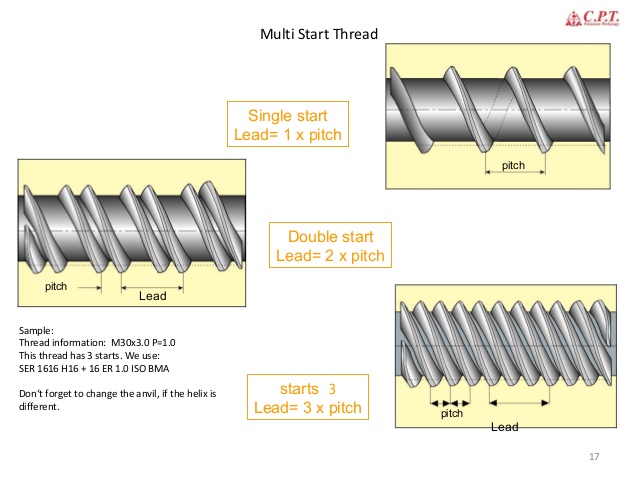
USES OF A SCREW THREAD
1. It is used fasteners such as wood screws, machine screws, nuts and bolts.
2. It is used in connecting threaded pipes and hoses to each other and to caps and fixtures.
3. It is used in gear reduction via worm drives
4. It is used in moving objects linearly by converting rotary motion to linear motion, as in
the lead screw of a jack.
5. It is used in measuring by correlating linear motion to rotary motion (and simultaneously
amplifying it), as in a micrometer.
6. It is used in both moving objects linearly and simultaneously measuring the movement,
combining the two aforementioned functions, as in a lead screw of a lathe.
In all of these applications, the screw thread has two main functions:
1. It converts rotary motion into linear motion.
2. It prevents linear motion without the corresponding rotation.
EVALUATION
1. What is a screw?
2. List and explain the parts of a screw.
3. How does a screw thread operate?
4. What are the uses of the screw thread?
ASSIGNMENT
1. What do you understand by robots?
2. Who was the first person that actually uses the word robot to describe an artificial person?
MAIN TOPIC: Immunization
SPECIFIC TOPIC: Meaning of Immunization
REFERENCE BOOKS: Nigerian Basic Science Project by STAN
PERFORMANCE OBJECTIVE: At the end of the lesson the students should be able to:
a. Define immunization
b. Explain immunity
CONTENT: Immunization
Immunization is the introduction of vaccines to protect people from certain dangerous diseases and infections. Doctors give vaccination or inoculations by injections against diseases like, measles, polio, tetanus, tuberculosis, diphtheria and whooping cough.


Immunity: The body acquires immunity against some diseases. Once the disease germ enters the body, antibodies are produced. The body antibodies will react and destroy the germs. Once the antibodies have been made once. Once the antibodies have been made the body will continue to make them easily to protect the body from the micro-organisms. The body is said to be immunized.

EVALUATION: The lesson is evaluated with the following questions.
a. Define immunization
b. Explain immunity
c. Mention immunization vaccines.
further studies
http://kidshealth.org/parent/general/bo ... mmune.html
http://www.cyh.com/HealthTopics/HealthT ... &id=2402#1
practice test
http://kidshealth.org/kid/htbw/_bfs_ISquizsource.html
LESSON 15
TOPIC: THE SCREW THREAD
CONTENT: 1. Meaning of a Screw
2. Parts of a Screw Thread
3. Operation of a Screw thread
4. Uses of Screw Thread
MEANING OF A SCREW
Screw, mechanical fastening device consisting essentially of an inclined plane wound spirally around a cylinder or a cone. The ridges formed by the winding planes are called threads, and depending on the intended use, the threads may be square, triangular, or rounded in cross section. The distance between two corresponding points on adjacent threads is called the pitch. If the thread is on the outside of a cylinder, it is called a screw or male thread, and if it is on the inside of a cylinder, as in the case of a common nut, it is called a female screw. Screws and bolts used in machines employ a cylindrical shaft with a constant inner or minor diameter, but wood screws and pipe threads are cut on a tapering cone.


PARTS OF A SCREW THREAD
A screw thread is made of the following parts:
1. Thread or Lead
2. Pitch
3. Plane or Start

Lead: Is the distance along the screw's axis that is covered by one complete rotation of the screw (360°).
Pitch: Is the distance from the crest of one thread to the next. Because the vast majority of screw thread forms are single-start thread forms, their lead and pitch are the same.
Single-start- means that there is only one "ridge" wrapped around the cylinder of the screw's body. Each time that the screw's body rotates one turn (360°), it has advanced axially by the width of one ridge.
"Double-start" -means that there are two "ridges" wrapped around the cylinder of the screw's body Each time that the screw's body rotates one turn (360°), it has advanced axially by the width of two ridges.
OPERATION OF A SCREW THREAD
A screw thread, often shortened to thread, is a helical structure used to convert between rotational and linear movement or force. A screw thread is a ridge wrapped around a cylinder or cone in the form of a helix, with the former being called a straight thread and the latter called a tapered thread. More screw threads are produced each year than any other machine element.
The mechanical advantage of a screw thread depends on its lead, which is the linear distance the screw travels in one revolution. In most applications, the lead of a screw thread is chosen so that friction is sufficient to prevent linear motion being converted to rotary, which is so the screw does not slip even when linear force is applied so long as no external rotational force is present. This characteristic is essential to the vast majority of its uses. The tightening of a fastener's screw thread is comparable to driving a wedge into a gap until it sticks fast through friction and slight plastic deformation.

USES OF A SCREW THREAD
1. It is used fasteners such as wood screws, machine screws, nuts and bolts.
2. It is used in connecting threaded pipes and hoses to each other and to caps and fixtures.
3. It is used in gear reduction via worm drives
4. It is used in moving objects linearly by converting rotary motion to linear motion, as in
the lead screw of a jack.
5. It is used in measuring by correlating linear motion to rotary motion (and simultaneously
amplifying it), as in a micrometer.
6. It is used in both moving objects linearly and simultaneously measuring the movement,
combining the two aforementioned functions, as in a lead screw of a lathe.
In all of these applications, the screw thread has two main functions:
1. It converts rotary motion into linear motion.
2. It prevents linear motion without the corresponding rotation.
EVALUATION
1. What is a screw?
2. List and explain the parts of a screw.
3. How does a screw thread operate?
4. What are the uses of the screw thread?
ASSIGNMENT
1. What do you understand by robots?
2. Who was the first person that actually uses the word robot to describe an artificial person?
WEEK 6
LESSON 16
TOPIC: GEAR
CONTENT:
1. Description of gears
2. Application of Gears
DESCRIPTION OF GEARS
Gear is a toothed wheel or cylinder used to transmit rotary or reciprocating motion from one part of a machine to another. Two or more gears, transmitting motion from one shaft to another, constitute a gear train.
A gear is a rotating machine part having cut teeth, or cogs, which mesh with another toothed part in order to transmit torque. Two or more gears working in tandem are called a transmission and can produce a mechanical advantage through a gear ratio and thus may be considered a simple machine. Geared devices can change the speed, torque, and direction of a power source. The most common situation is for a gear to mesh with another gear; however a gear can also mesh a non-rotating toothed part, called a rack, thereby producing translation instead of rotation.
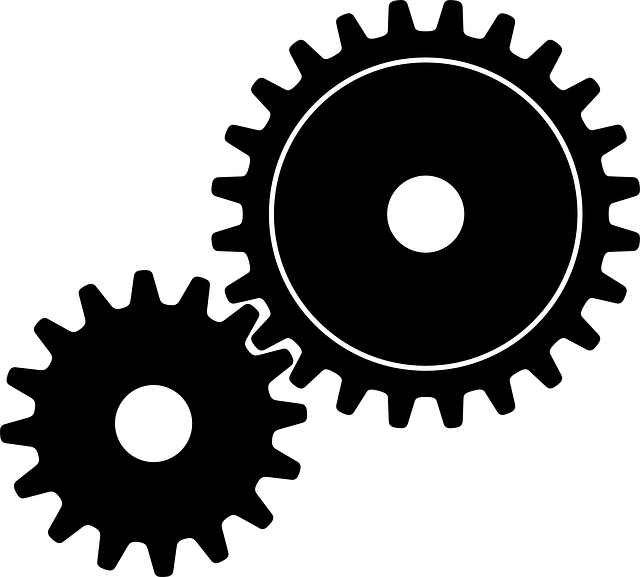
A GEAR
TYPES OF GEAR
1. External vs internal gears


2. Helical gear
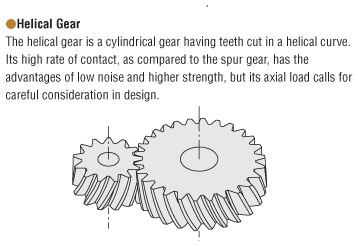
3. Double helical
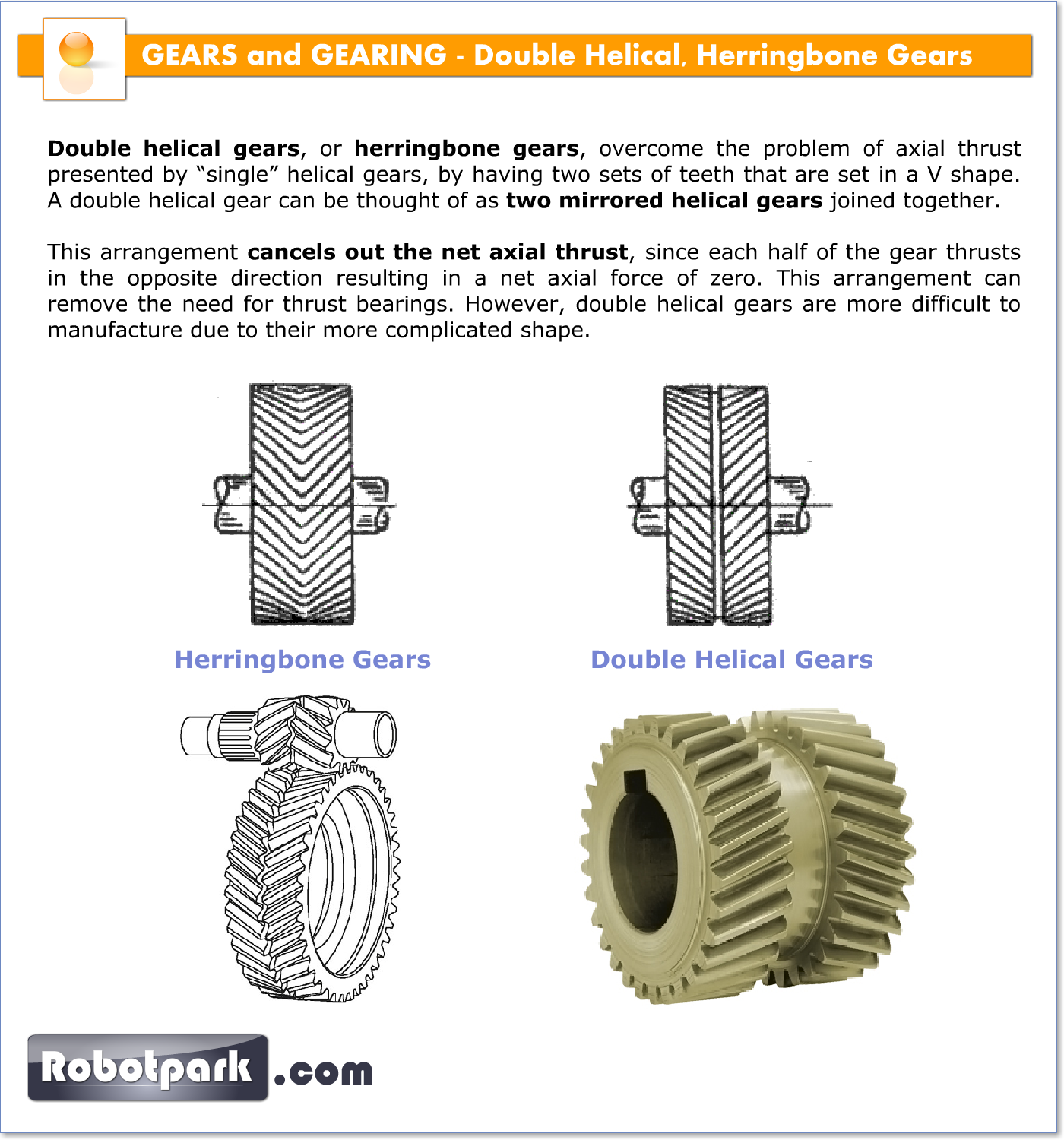
4. Bevel

5.Hypoid
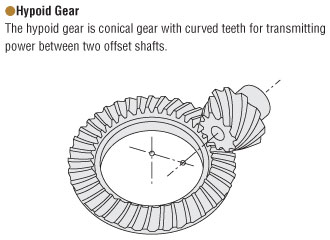
6.Crown gear

7.Worm gear
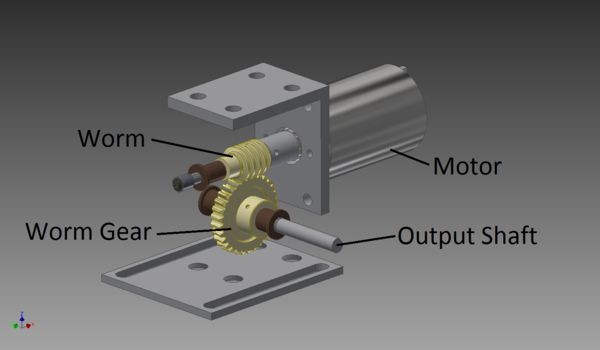
8. 4-start worm and wheel
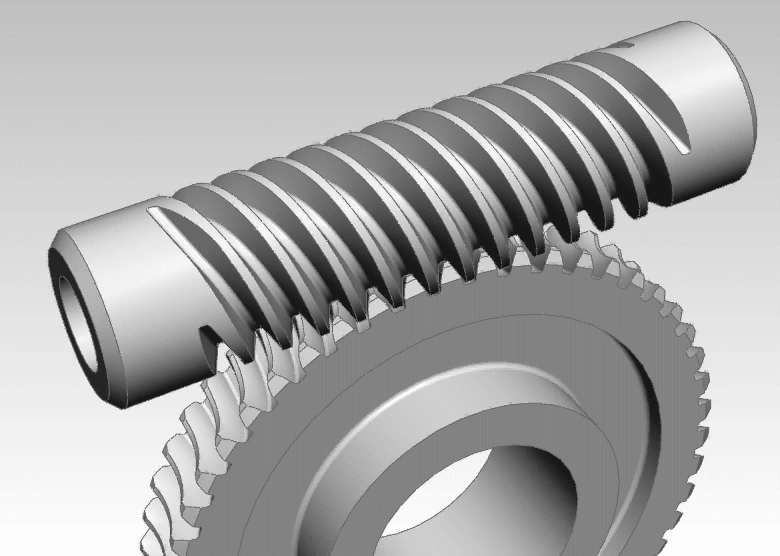
9. Rack and pinion
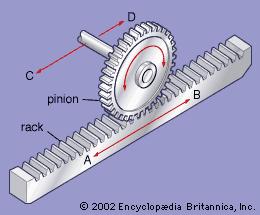
10. Sun and planet:

11 Cage gear
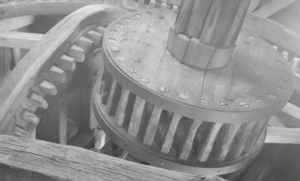
LESSON 17
APPLICATION OF GEAR
Today there is vast application of gears in every industry. It is the most common device for transmitting power in mechanical engineering. Gears are an important component of small but complicated machines like clock to large kiln and mill drive system. The gears form an essential part in running of various machines and automobile.
There are varieties of gears available that are used in different industries according to the specific requirements. These gears can be classified under automotive gears, mining gears, marine gears, wind turbines, bicycle gears, mill heads, instrumentation gears, conveyor system and more.
Automotive Gears
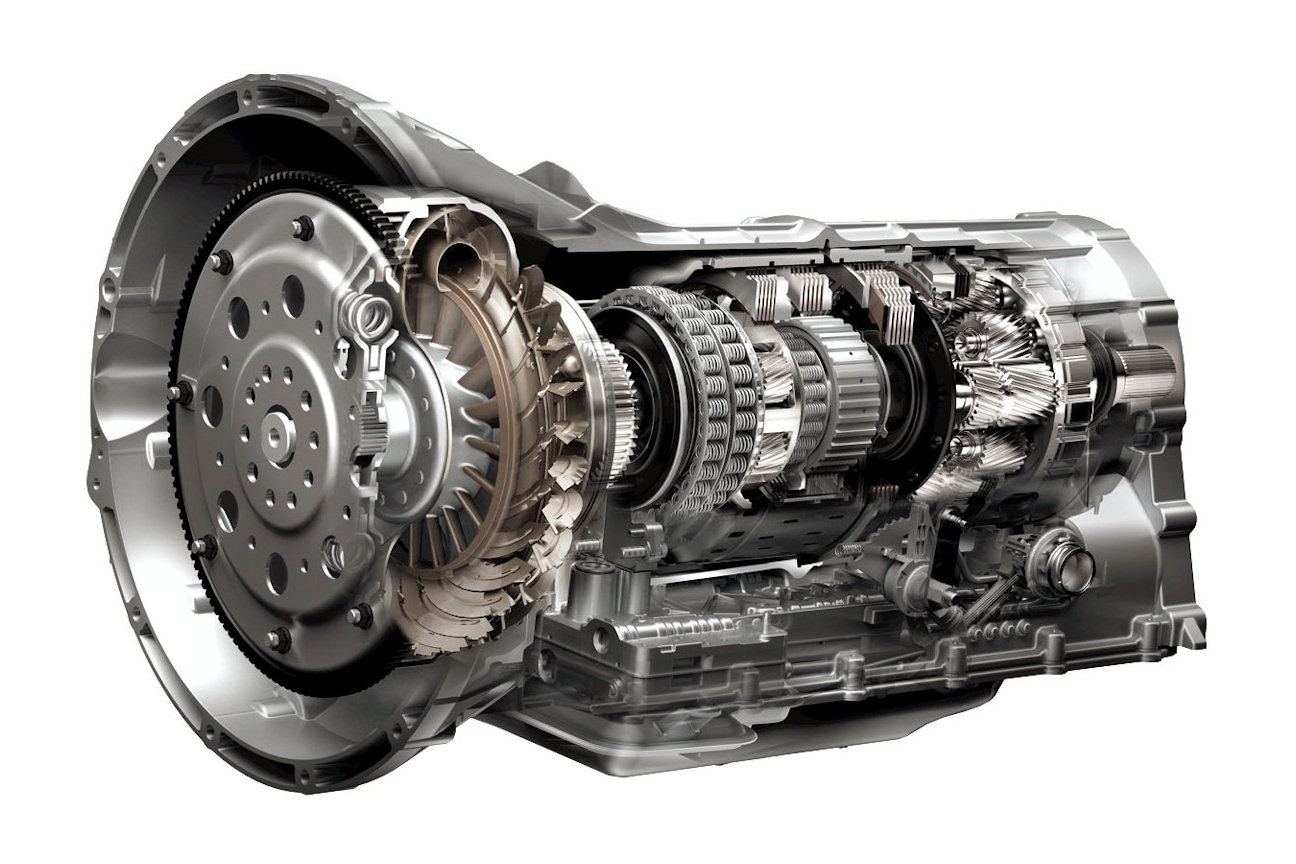
Automotive Industry require automotive gears for high torque capacity and to convert mechanical energy smoothly and noiselessly. The type of automotive gears used are Manual transmission, Semi automatic transmission and Automatic transmission.
Marine Gear

Marine uses gears in various vessels like fast ferry boats, luxury yachts, frigates and work boats etc. These marine gears are usually more powerful and they meet critical applications. Automatic of marine gears used are Planetary Gears, Worm Reduction Gears and Helical Gears.
Agricultural Gears

Agricultural Gears are widely used in the agro- industry. Agricultural Automotive Gears are used in processes like tilling, seeding, ploughing, irrigation, pest and insect control etc. The agriculture vehicle, tractor also makes use of these agricultural gears in its mechanism. Usually Spur Gears, Helical Gears, Worm Gears and Sprockets are used.
Conveyor Systems
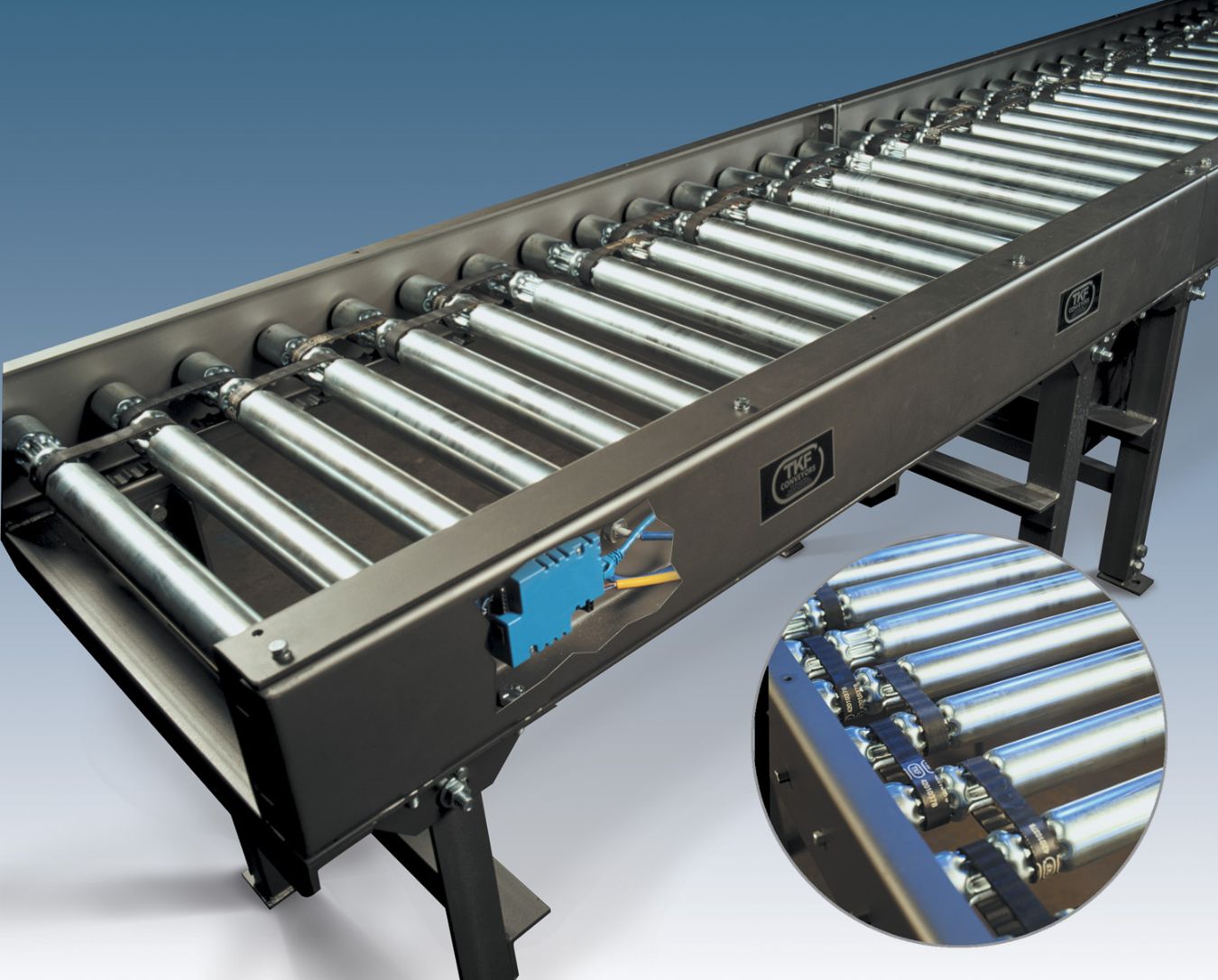
Gears are also used in Conveyor Systems for optimization of mechanical energy. With the help of gears, goods are transported from one place to another through belts.
Mill Heads

Few of the gears are used for mill heads in cement plants, sugar mills, sag mills, tube mills, coal mills, sponge iron plants, gold mine sand many more. These gears are Girth Gears, Spur Gears, Face Gears, Spiral Bevel Gears and Helical Gears.
Mining Gears
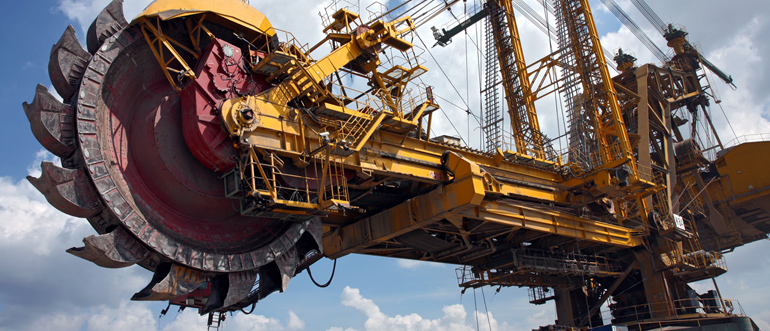
Different Automatic of Gears are used in mining industry to keep the machines run efficiently by power transmission in both above and underground operations. Automatic of gearboxes used are Bevel Gear , Helical Gear, Right Angle Gear, Parallel Shaft Gear, Planetary Gear and Worm Gear.
Power Station
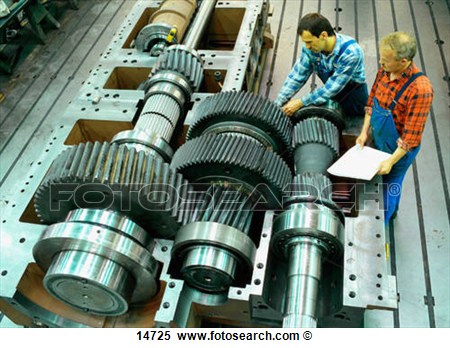
Power Station make use of high quality and high precision gears for the use in power generation equipment and machines. They are used for for high speed application. The gears that are usually used are Parallel Shaft Gears and Planetary Gears
Wind Turbine
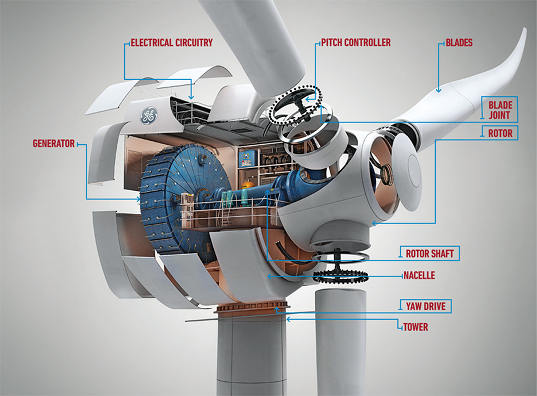
The wind turbine makes use of gears to make the slow blades rotate faster. Automatic of gearbox used are Planetary Gearbox, Helical Gearbox and Worm Gearbox.
EVALUATION
1. Describe how a gear work?
2. State the applications of gear?
ASSIGNMENT
1. Describe the following types of gear;
a.External and internal gear
b.Helical gear
c.Double helicar gear.
LESSON 18
MAIN TOPIC: Food storage in the body
SPECIFIC TOPIC: Food storage
REFERENCE BOOK: Integrated Science for JSCE by Adebayo Begun and Nigerian Integrated Science Project Pupils Textbook1
PERFORMANCE OBJECTIVE: At the end of the lesson the students should be able to:
a. Mention the end product of the classes of food
b. State the forms which these foods are stored in the body
CONTENT: Storage of food in Human Body
Food for storage is assimilated mostly in the small intestine.
Fats: Excess fats are stored underneath the skin, around the thighs in the abdomen and buttocks and also deposited in fat issues.
Sugars: some of the excess sugars are temporarily stored in the liver and muscles as glycogen. Some are converted to fat.
Protein and amino acids are not stored but converted into urea and excreted.
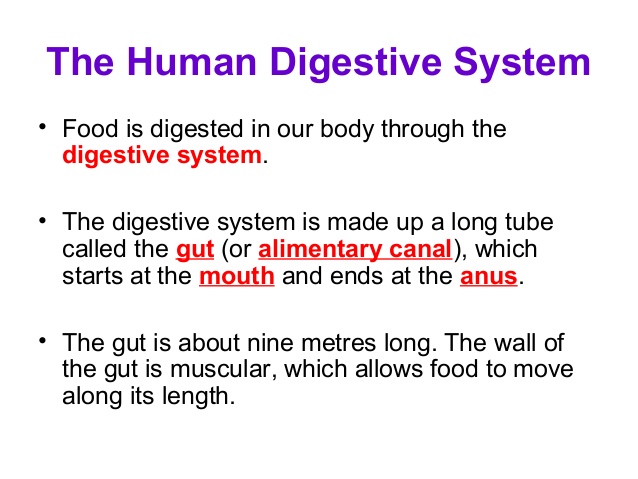
The end products of digestion are:
Amino acid from protein digestion
Glucose - from starch digestion
Fatty acid and glycerol - from fat digestion
Fatty acid and glycerol are absorbed through the lacteals into the blood stream.
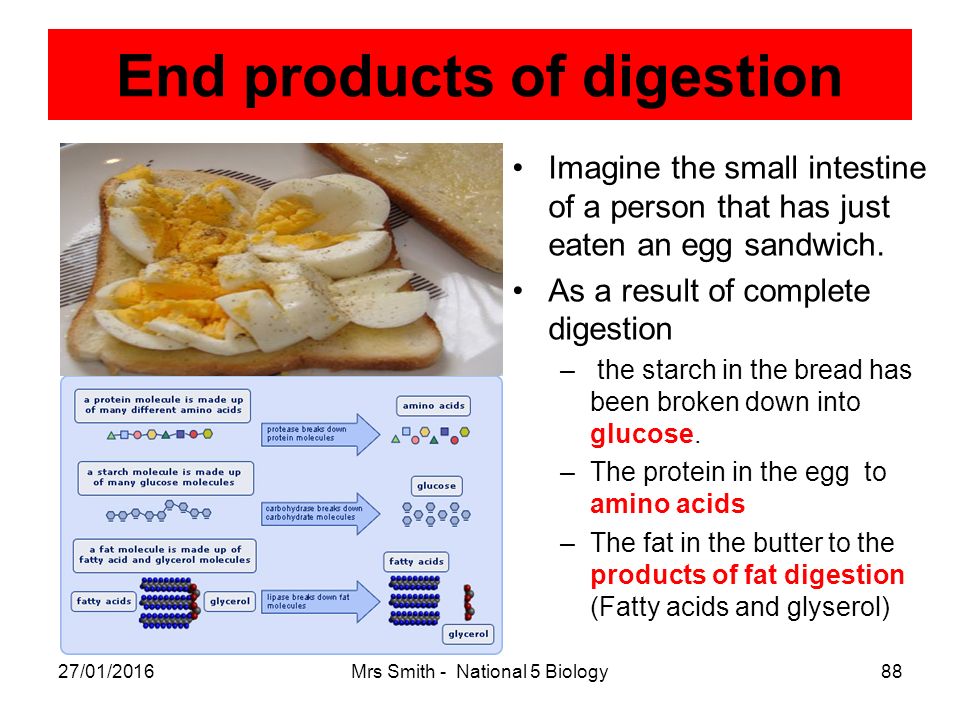
EVALUATION
a. Mention the end products of digested food
b. State the forms in which digested foods are stored in the body
further studies
http://www.weightlossforall.com/energy- ... weight.htm
http://www.diet.com/g/digestion-and-absorption
TOPIC: GEAR
CONTENT:
1. Description of gears
2. Application of Gears
DESCRIPTION OF GEARS
Gear is a toothed wheel or cylinder used to transmit rotary or reciprocating motion from one part of a machine to another. Two or more gears, transmitting motion from one shaft to another, constitute a gear train.
A gear is a rotating machine part having cut teeth, or cogs, which mesh with another toothed part in order to transmit torque. Two or more gears working in tandem are called a transmission and can produce a mechanical advantage through a gear ratio and thus may be considered a simple machine. Geared devices can change the speed, torque, and direction of a power source. The most common situation is for a gear to mesh with another gear; however a gear can also mesh a non-rotating toothed part, called a rack, thereby producing translation instead of rotation.

A GEAR
TYPES OF GEAR
1. External vs internal gears


2. Helical gear

3. Double helical

4. Bevel

5.Hypoid

6.Crown gear

7.Worm gear

8. 4-start worm and wheel

9. Rack and pinion

10. Sun and planet:

11 Cage gear

LESSON 17
APPLICATION OF GEAR
Today there is vast application of gears in every industry. It is the most common device for transmitting power in mechanical engineering. Gears are an important component of small but complicated machines like clock to large kiln and mill drive system. The gears form an essential part in running of various machines and automobile.
There are varieties of gears available that are used in different industries according to the specific requirements. These gears can be classified under automotive gears, mining gears, marine gears, wind turbines, bicycle gears, mill heads, instrumentation gears, conveyor system and more.
Automotive Gears

Automotive Industry require automotive gears for high torque capacity and to convert mechanical energy smoothly and noiselessly. The type of automotive gears used are Manual transmission, Semi automatic transmission and Automatic transmission.
Marine Gear

Marine uses gears in various vessels like fast ferry boats, luxury yachts, frigates and work boats etc. These marine gears are usually more powerful and they meet critical applications. Automatic of marine gears used are Planetary Gears, Worm Reduction Gears and Helical Gears.
Agricultural Gears

Agricultural Gears are widely used in the agro- industry. Agricultural Automotive Gears are used in processes like tilling, seeding, ploughing, irrigation, pest and insect control etc. The agriculture vehicle, tractor also makes use of these agricultural gears in its mechanism. Usually Spur Gears, Helical Gears, Worm Gears and Sprockets are used.
Conveyor Systems

Gears are also used in Conveyor Systems for optimization of mechanical energy. With the help of gears, goods are transported from one place to another through belts.
Mill Heads

Few of the gears are used for mill heads in cement plants, sugar mills, sag mills, tube mills, coal mills, sponge iron plants, gold mine sand many more. These gears are Girth Gears, Spur Gears, Face Gears, Spiral Bevel Gears and Helical Gears.
Mining Gears

Different Automatic of Gears are used in mining industry to keep the machines run efficiently by power transmission in both above and underground operations. Automatic of gearboxes used are Bevel Gear , Helical Gear, Right Angle Gear, Parallel Shaft Gear, Planetary Gear and Worm Gear.
Power Station

Power Station make use of high quality and high precision gears for the use in power generation equipment and machines. They are used for for high speed application. The gears that are usually used are Parallel Shaft Gears and Planetary Gears
Wind Turbine

The wind turbine makes use of gears to make the slow blades rotate faster. Automatic of gearbox used are Planetary Gearbox, Helical Gearbox and Worm Gearbox.
EVALUATION
1. Describe how a gear work?
2. State the applications of gear?
ASSIGNMENT
1. Describe the following types of gear;
a.External and internal gear
b.Helical gear
c.Double helicar gear.
LESSON 18
MAIN TOPIC: Food storage in the body
SPECIFIC TOPIC: Food storage
REFERENCE BOOK: Integrated Science for JSCE by Adebayo Begun and Nigerian Integrated Science Project Pupils Textbook1
PERFORMANCE OBJECTIVE: At the end of the lesson the students should be able to:
a. Mention the end product of the classes of food
b. State the forms which these foods are stored in the body
CONTENT: Storage of food in Human Body
Food for storage is assimilated mostly in the small intestine.
Fats: Excess fats are stored underneath the skin, around the thighs in the abdomen and buttocks and also deposited in fat issues.
Sugars: some of the excess sugars are temporarily stored in the liver and muscles as glycogen. Some are converted to fat.
Protein and amino acids are not stored but converted into urea and excreted.

The end products of digestion are:
Amino acid from protein digestion
Glucose - from starch digestion
Fatty acid and glycerol - from fat digestion
Fatty acid and glycerol are absorbed through the lacteals into the blood stream.

EVALUATION
a. Mention the end products of digested food
b. State the forms in which digested foods are stored in the body
further studies
http://www.weightlossforall.com/energy- ... weight.htm
http://www.diet.com/g/digestion-and-absorption
WEEK 7
LESSON 19
TOPIC: EFFICIENCY OF SIMPLE MACHINE
CONTENT: 1. Efficiency of a machine.
2. Level of Efficiency of a Machine
3.Care of Machines
EFFICIENCY OF A MACHINE
The efficiency of a machine is defined as the ratio of work obtained from the machine to work put into the machine.
It also defined as the ratio of work output of the machine to the total work input.
Efficiency = Work output X 100% / Work input
It is expected that in a perfect machine that the work put in a machine by applying an effort force should be equal to the work obtained from the machine by lifting a load.When the effort force and the load are equal,such a machine is said to be 100% efficient.
In pratice,all machines have some friction in them and this reduces the efficiency. Part of the work put into a machine is thus always wasted in overcoming friction. This can be concluded that no machine is hundred percent (100%) efficient.
LEVEL OF THE EFFICIENCY OF A MACHINE
The level of the efficiency of a machine can be determined by the work output and work input of the machine,it velocity ratio and mechanical advantage. It can also be determined by the ratio of load x distance moved by load to effort x distance moved by effort or the ratio workdone in load to the workdone in effort.
Therefore:
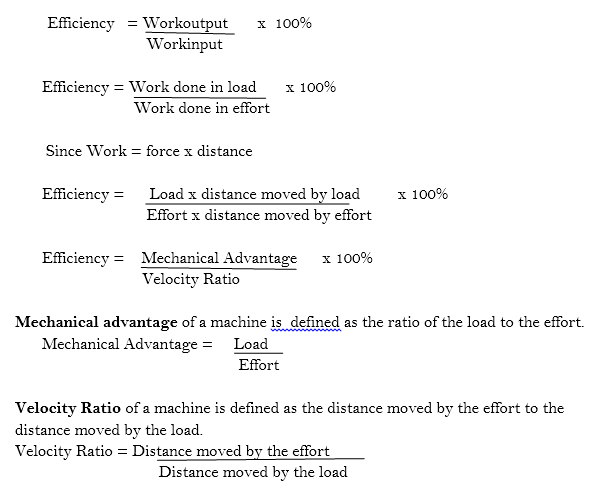
If the mechanical Advantage is equal to the velocity ratio, the machine will have 100% efficiency which shows that it has no friction in it.
GUIDED ACTIVITY
1. A system of lever with velocity ratio 30 overcomes resistance of 2500 Newton when an effort of 125 Newton is applied to it, calculate
(a) The mechanical advantage of the system.
(b) It’s efficiency.
ANSWERS: A = 20
B = 66.7%
2. A machine with a velocity of 5 required 625 joule of work to raise a load of 250 Newton through a vertical distance of 20m. (A)Find the efficiency and (B) mechanical advantage of the machine.
ANSWER: A. = 80%
B = 4
MAINTENANCE OF MACHINE
1. Greasing the moving parts of the machine regularly.
2. Regular removal of dust and dirt from a machine is necessary to ensure good performance of the machine.
3. Regular checking and changing of the oil of our machine is an important practice recommended for all users of machines.
4. When an engine is not in use, we must check and warm it up to prevent rusting.
5. When any machine is faulty, and the fault detected, they should immediately be corrected.

EVALUATION
1. What is the efficiency of a machine?
2. How can you determine the efficiency of a machine?
3. What are the steps taken to carry out the maintenance of a machine?
ASSIGNMENT
1. What is the mechanical advantage of machine if the load and effort applied are 350N and 70 N respectively?
2. Differentiate between mechanical advantage and velocity ratio
3. State why no machine is hundred percent efficient.
Further Studies 1
Further Studies 2
Practice Test 1
Practice Test 2
Practice Test 3
LESSON 20
MAIN TOPIC: Wildlife conservation
SPECIFIC TOPIC: Meaning of conservation
REFERENCE BOOK: Integrated Science for JSCE by Adebayo Begun and Nigerian Integrated Science Project Pupils Textbook2
PERFORMANCE OBJECTIVE: At the end of the lesson the students should be able to:
a. Define wildlife conservation
b. State values of wildlife
CONTENT: Wildlife Conservation
Wildlife conservation involves the preservation of wildlife so that man can make use of them and also ensure that they will continue to exist and not disappear. Wildlife includes large animals that are not domesticated. Examples of wildlife are lion, elephant, chimpanzee, monkeys, hyena etc

Values of wildlife
1. Wildlife serve as food
2. They are used in scientific studies to understand the balance of nature
3. The yield money when keep in game reserves.

EVALUATION
1. Explain wildlife conservation
2. State the values of wildlife
3. Mention examples of wildlife
ASSIGNMENT
a. Mention five (5) game reserves in Nigeria
further studies
http://kids.sandiegozoo.org/conservation
TOPIC: EFFICIENCY OF SIMPLE MACHINE
CONTENT: 1. Efficiency of a machine.
2. Level of Efficiency of a Machine
3.Care of Machines
EFFICIENCY OF A MACHINE
The efficiency of a machine is defined as the ratio of work obtained from the machine to work put into the machine.
It also defined as the ratio of work output of the machine to the total work input.
Efficiency = Work output X 100% / Work input
It is expected that in a perfect machine that the work put in a machine by applying an effort force should be equal to the work obtained from the machine by lifting a load.When the effort force and the load are equal,such a machine is said to be 100% efficient.
In pratice,all machines have some friction in them and this reduces the efficiency. Part of the work put into a machine is thus always wasted in overcoming friction. This can be concluded that no machine is hundred percent (100%) efficient.
LEVEL OF THE EFFICIENCY OF A MACHINE
The level of the efficiency of a machine can be determined by the work output and work input of the machine,it velocity ratio and mechanical advantage. It can also be determined by the ratio of load x distance moved by load to effort x distance moved by effort or the ratio workdone in load to the workdone in effort.
Therefore:

If the mechanical Advantage is equal to the velocity ratio, the machine will have 100% efficiency which shows that it has no friction in it.
GUIDED ACTIVITY
1. A system of lever with velocity ratio 30 overcomes resistance of 2500 Newton when an effort of 125 Newton is applied to it, calculate
(a) The mechanical advantage of the system.
(b) It’s efficiency.
ANSWERS: A = 20
B = 66.7%
2. A machine with a velocity of 5 required 625 joule of work to raise a load of 250 Newton through a vertical distance of 20m. (A)Find the efficiency and (B) mechanical advantage of the machine.
ANSWER: A. = 80%
B = 4
MAINTENANCE OF MACHINE
1. Greasing the moving parts of the machine regularly.
2. Regular removal of dust and dirt from a machine is necessary to ensure good performance of the machine.
3. Regular checking and changing of the oil of our machine is an important practice recommended for all users of machines.
4. When an engine is not in use, we must check and warm it up to prevent rusting.
5. When any machine is faulty, and the fault detected, they should immediately be corrected.

EVALUATION
1. What is the efficiency of a machine?
2. How can you determine the efficiency of a machine?
3. What are the steps taken to carry out the maintenance of a machine?
ASSIGNMENT
1. What is the mechanical advantage of machine if the load and effort applied are 350N and 70 N respectively?
2. Differentiate between mechanical advantage and velocity ratio
3. State why no machine is hundred percent efficient.
Further Studies 1
Further Studies 2
Practice Test 1
Practice Test 2
Practice Test 3
LESSON 20
MAIN TOPIC: Wildlife conservation
SPECIFIC TOPIC: Meaning of conservation
REFERENCE BOOK: Integrated Science for JSCE by Adebayo Begun and Nigerian Integrated Science Project Pupils Textbook2
PERFORMANCE OBJECTIVE: At the end of the lesson the students should be able to:
a. Define wildlife conservation
b. State values of wildlife
CONTENT: Wildlife Conservation
Wildlife conservation involves the preservation of wildlife so that man can make use of them and also ensure that they will continue to exist and not disappear. Wildlife includes large animals that are not domesticated. Examples of wildlife are lion, elephant, chimpanzee, monkeys, hyena etc

Values of wildlife
1. Wildlife serve as food
2. They are used in scientific studies to understand the balance of nature
3. The yield money when keep in game reserves.

EVALUATION
1. Explain wildlife conservation
2. State the values of wildlife
3. Mention examples of wildlife
ASSIGNMENT
a. Mention five (5) game reserves in Nigeria
further studies
http://kids.sandiegozoo.org/conservation
WEEK 8
LESSON 21
TOPIC: WORK, ENERGY AND POWER
CONTENT:
1. Concept of work, energy and power.
2. Meaning of potential and kinetic energy.
3. Calculations involving work-done.
CONCEPT OF WORK, ENERGY AND POWER
WORK
Work is said to be done whenever a force or load moves through a distance. i.e. work=force x distance moved in the direction of the force(fxd).
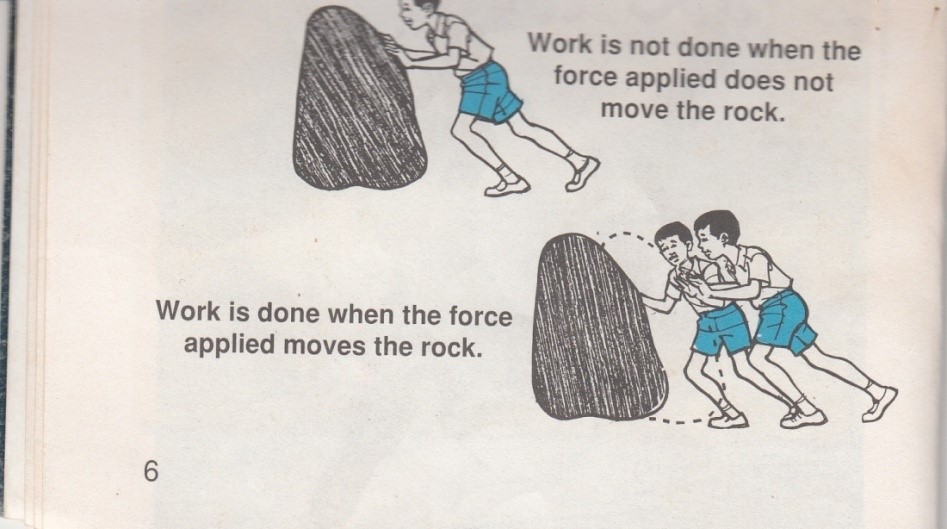
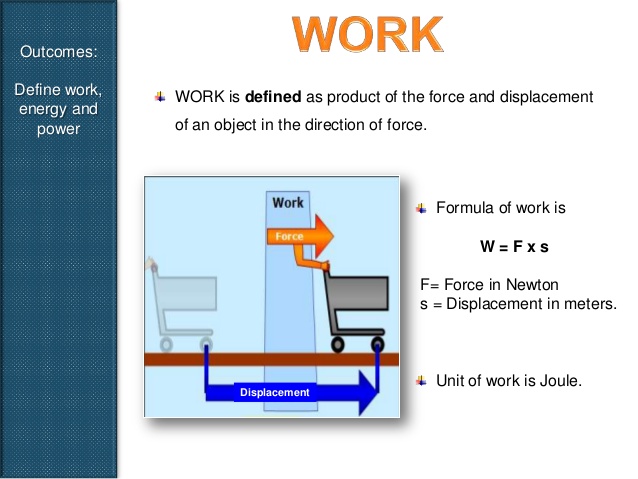
Mathematically
W(d)=fxd
The unit of work is joules with symbol J.
Force
Force is that which changes a body’s state of rest or uniform motion in a straight line. It can as well be expressed as:
Force = mass x acceleration
i.e. F = m x a
where: F = force, M=mass and A=acceleration
The unit of force is Newton(N).
If force = mass x acceleration
Work can be given as: Work = Mass x acceleration x distance.
This is a simple formula that can be used to calculate work done especially against gravity.

ENERGY
Energy is the capacity for doing work or the ability to do work. Energy has the same unit as work, that is, energy is measured in joules.
PRINCIPLE OF CONSERVATION OF ENERGY
It states: Energy cannot be created or destroyed but can be converted from one form to another.
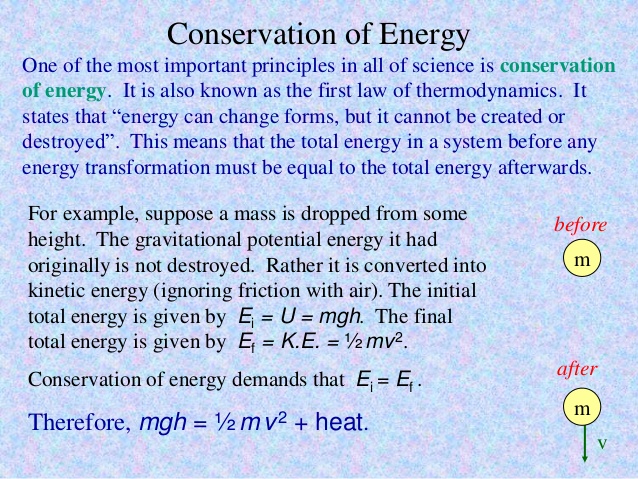
FORMS OF ENERGY
Mechanical energy
Light energy
Sound energy
Electrical energy
Heat energy
Nuclear energy
Magnetic energy
Chemical energy
Solar energy
These forms of energy are very useful to us in our daily activities. We derive comfort or pleasure from electrical and sound energy produced from the oxidation of food in our body tissues and it is utilized in doing work.
POWER
Power is defined as the rate at which work is done or the rate of transfer of energy or the rate of doing work. i.e. work done divided by time
Power = (workdone or energy transferred)/(time taken)
The S.I unit of power is watt (w).The larger units are kilowatt (KW) Such as electric bulb used in our homes are usually rated at 40w or 60w.
![Image]()
2. KINETIC ENERGY: This is the energy possessed by reason of motion. Moving objects possess kinetic energy. The stored potential energy in the springs of clock and wristwatches gradually changes to kinetic energy as it winds.
The amount of kinetic energy possessed by a body is dependent on its mass and the velocity with which it is moving. To this end, the kinetic energy of a moving object with mass “M” traveling with a velocity ‘v’ is written by the formula given below
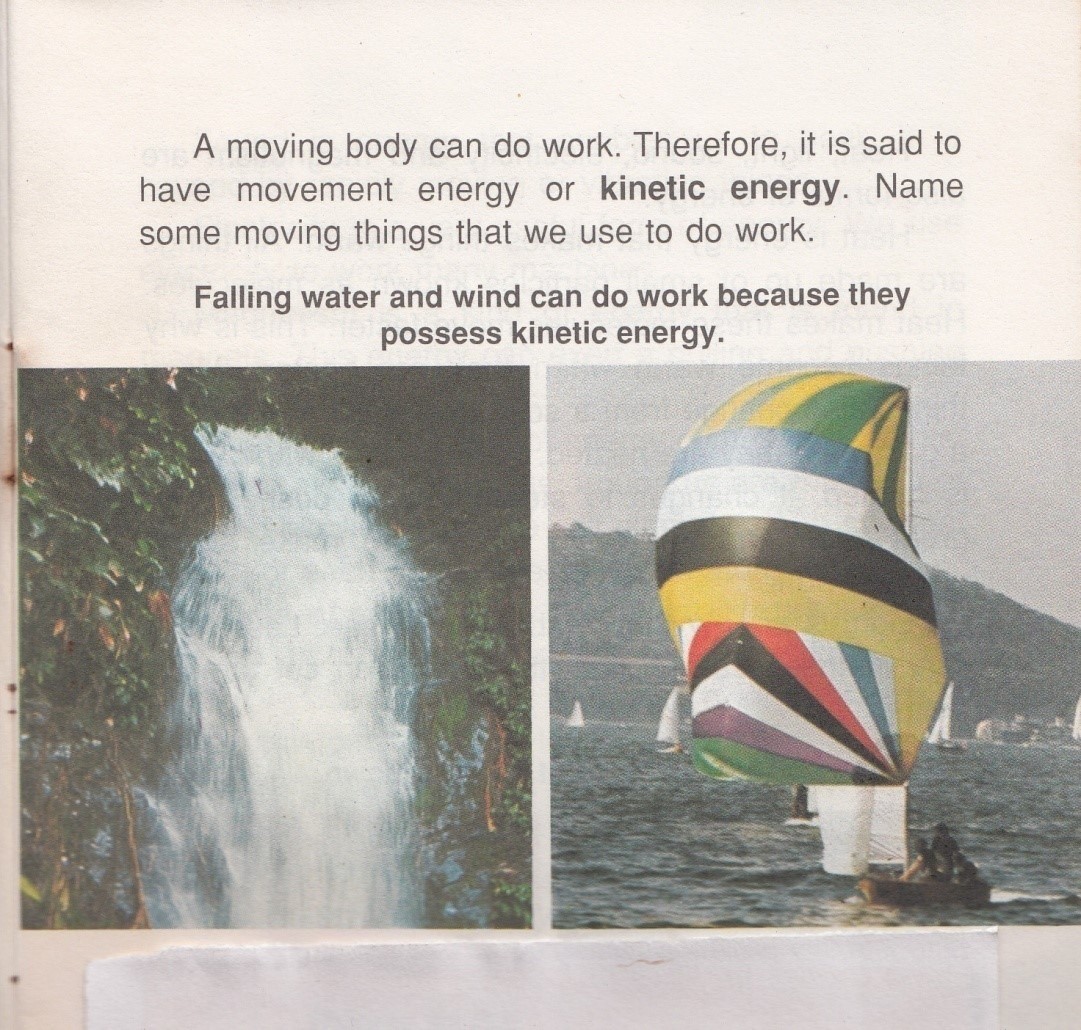
kinetic energy (k.e)= 1/2mv2
where,
m=mass of an object
v=velocity of an object
EVALUATION
1.Explain these words with appropriate examples.
(a)Potential energy
(b)Kinetic energy
LESSON 23
CALCULATIONS INVOLVING WORK-DONE
What work is done when a mass of 5.00kg is raised through a vertical height of 2.5m (acceleration due to gravity is 10m/sec)?
Solution
Work-done = mass acceleration × distance
Since force = mass × acceleration
W(d) =mass accel. distance
=5.00kg 10m/s2 2.5m
=125joules
2. Calculate the work-done by a body of weight 200N which, moves through a distance of 12N
Solution
Force=200N
Distance moved=12m
Work-done=force distance moved
=(200 12)joules
=2400joules
ENERGY TRANSFER WHEN WORK IS DONE
1. As the watch ticks working by moving the hands, the stored energy called potential energy has been converted to kinetic energy.
2. The chemical energy in petrol is converted into heat in the engine, which makes the car moves.
3. Torch light store chemical energy which is converted to electrical energy, then to heat and light which provides us light to see at night.
4. In riding a bicycle, the rider provides chemical energy which changes to mechanical energy as the .rider pedals the bicycle and the pedaling gives rise to a forward movement (kinetic energy) therefore work has taken place.

Force and Motion
Force makes things move. When you ride a bicycle, the force of pushing the pedal causes the bicycle to go in motion.

LESSON 24
SPECIFIC TOPIC: Renewable and non-renewable energy
REFERENCE BOOK: Nigerian Basic Science Project Pupils textbook1 by STAN
PERFORMANCE OBJECTIVE: At the end of the lesson the students should be able to:
a. Explain renewable and non-renewable energy
b. Mention examples of renewable and non-renewable energy
CONTENT: Renewable energy
Renewable energy are the types of energy that last for a life time. Renewable energy are clean and does not cause pollution. Renewable energy is cheap once it is installed. Examples of renewable energy are: wind energy, water i.e. Hydro-electric dam
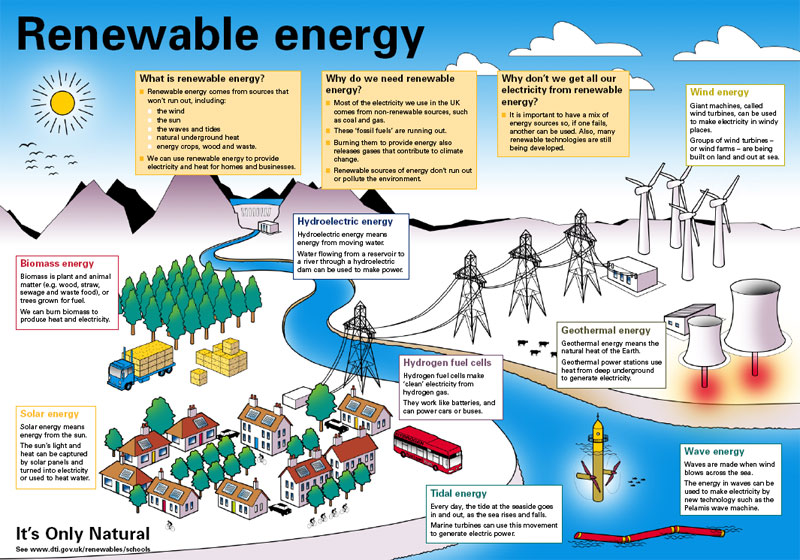
Non-renewable energy: is the type of energy that cannot last for. It forever causes pollution and is expensive. Examples are crude oil, coal firewood etc
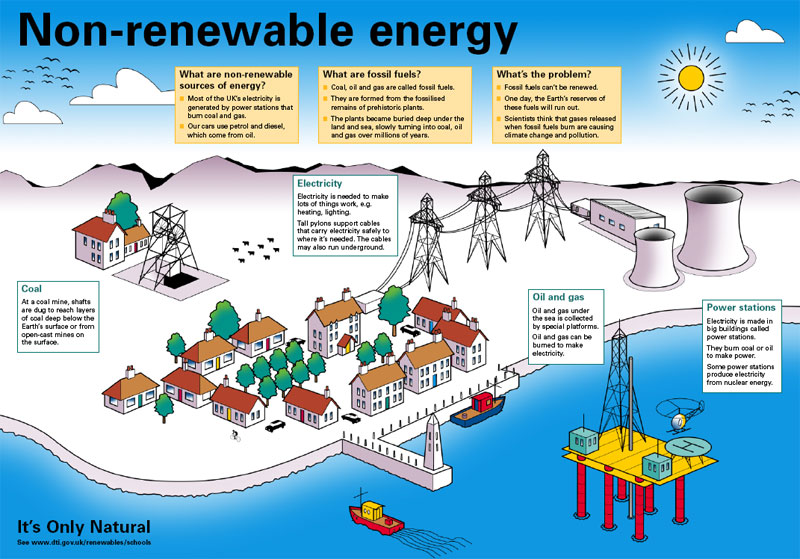
EVALUATION
a. Explain renewable and non-renewable energy
b. Give examples of renewable and non-renewable energy
further studies
http://www.eia.gov/kids/
http://www.childrensuniversity.manchest ... renewable/
http://www.ecofriendlykids.co.uk/renewa ... urces.html
practice test
http://www.darvill.clara.net/altenerg/mainquiz.htm
http://www.proprofs.com/quiz-school/sto ... -resources
http://www.quia.com/quiz/106563.html?AP_rand=278326452
LESSON 25
MAIN TOPIC: Wildlife conservation
SPECIFIC TOPIC: Man's activities affecting wildlife
REFERENCE BOOK: Integrated science for JSCE by Adebayo Begun
PERFORMANCE OBJECTIVE: At the end of the lesson the students should be able to:
a. Enumerate man's activities affecting wildlife
b. Mention game reserves in Nigeria.
CONTENT: Games reserves national park and 2003 in Nigeria
Name...................State..................Status
Kainji lake............Niger..................National park
Old Oyo...............Oyo....................National park
Yankari................Bauchi................National park
Okpara................Oyo....................Game reserves
Kogin kano............Kano..................Game reserves
Orle river.............Edo....................Game reserves
Obudu ...............Cross River.............Cattle ranch
Ikogosi ...............Ekiti ..................Warm Spring
U.I zoo................Oyo....................Zoo
Jos wildlife park...Plateau..............National park
Man's activities, affecting wildlife
1. Uncontrolled and indiscriminate hunting for meat
2. Sport hunting of wildlife and fish
3. Burning of bush
4. Industrialization projects
5. Pollution through air
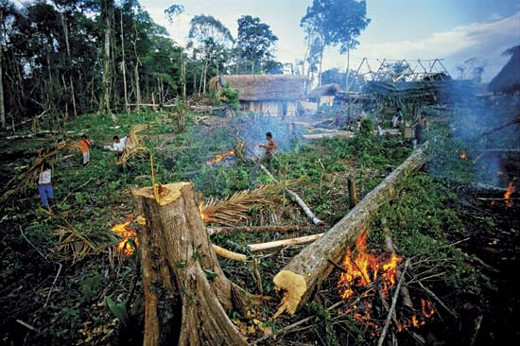
GAME RESERVES IN NIGERIA
Nigeria has eight national parks and game reserves spread throughout the country. The parks make up about 3 percent of Nigeria's total land area. Collectively they contain an abundant diversity of fauna like buffaloes, roan antelopes, chimpanzees, crocodiles, hippopotamuses, hyenas, giant forest hogs, lions and leopards, as well as flora.
Chad Basin
Established in 1991, Chad Basin is located in the Borno and Yobe States. The park includes the Sambisa game reserve and parts of the Hadejia-Nguru wetlands. It is an important sanctuary for migratory birds and a total of 377 species of birds have been recorded.
Cross River
The largest rain forest in Nigeria and the oldest surviving one in Africa is located in Cross River National Park. Sharing its name with the state, Cross River also was established in 1991 and has the highest tropical biodiversity in Africa. Twenty percent of the world’s total known species of butterflies reside in Cross River.
Gashaka Gumti
The largest national park in Nigeria, established in 1991, is located in the Taraba and Adamawa states and along the Cameroon border. It contains grasslands as well as the country's highest peak, Chappal Waddii known as the “Mountain of Death,” with an elevation of 7,936 feet.
Kainji
Establish in 1979, Kainji is the oldest national park. The second largest park can be found in the Niger and Kwara states. Inside the park, visitors will find the Kainji Lake, the Borgu and Zugurma game reserves.
Kamuku
Founded in 1999, Kamuku is in the Kaduna State, the park is easily accessible thanks to the Kaduna International Airport situated close by. The vegetation is a savannah woodland populated with a large variety of birds, as well as elephants, roan antelopes, mountain reedbucks, side stripped hyenas and jackals.
Okomu
This small park, totaling only 44,726 acres, is part of the larger Okomu forest reserve. It is the second largest rain forest in Nigeria and a great place for bird and primate watching as it is largely undisturbed. Okomu is located in the state Edo and was established in 1999.
Old Oyo
Found in the states Oyo and Kwara, Old Oyo was established in 1991. The largest collection of archaeological and cultural sites of Nigeria are located in Old Oyo including the royal cemeteries and the walls that surrounded the former ancient capital city.
Yankari
Situated in the state of Bauchi, Yankari is the premier game reserve, which first opened to the public in 1962. It boasts the largest population of elephants in West Africa as well as several endangered species like the leopard.
EVALUATION:
a. State man's activities that affects wildlife
b. Mention game reserves, parts and zoos in Nigeria
LESSON 26
MAIN TOPIC: Balance in Nature
SPECIFIC TOPIC: COMMUNITY
REFERENCE BOOK: Integrated Science for Junior Secondary Schools Bk2 by Evans
PERFORMANCE OBJECTIVE: At the end of the lesson the students should be able to:
a. Define community
b. Explain balance in nature
c. Sate the primary source of energy to the community

CONTENT: Community
Community is a group of different organisms living in a given area. This includes plants, human beings and other animals in that area.

Balance in Nature
For a balanced community. The biotic and abiotic factors in the environment have to be kept stable.

Energy is absorbed by plants from the sun which is the primary source of energy to the community is taken by the primary consumers, secondary and tertiary consumers. The decomposers feed on the dead remains of the plants and animals to liberate energy. Other ways of balancing the environment are through carbon cycle, nitrogen cycle and water cycle.
EVALUATION:
a. Define community
b. Explain balance in nature
c. What is the primary source of energy to the community
further studies
http://www.thewaterpage.com/water-conservation.htm
http://environment.nationalgeographic.c ... t-threats/
TOPIC: WORK, ENERGY AND POWER
CONTENT:
1. Concept of work, energy and power.
2. Meaning of potential and kinetic energy.
3. Calculations involving work-done.
CONCEPT OF WORK, ENERGY AND POWER
WORK
Work is said to be done whenever a force or load moves through a distance. i.e. work=force x distance moved in the direction of the force(fxd).


Mathematically
W(d)=fxd
The unit of work is joules with symbol J.
Force
Force is that which changes a body’s state of rest or uniform motion in a straight line. It can as well be expressed as:
Force = mass x acceleration
i.e. F = m x a
where: F = force, M=mass and A=acceleration
The unit of force is Newton(N).
If force = mass x acceleration
Work can be given as: Work = Mass x acceleration x distance.
This is a simple formula that can be used to calculate work done especially against gravity.

ENERGY
Energy is the capacity for doing work or the ability to do work. Energy has the same unit as work, that is, energy is measured in joules.
PRINCIPLE OF CONSERVATION OF ENERGY
It states: Energy cannot be created or destroyed but can be converted from one form to another.

FORMS OF ENERGY
Mechanical energy
Light energy
Sound energy
Electrical energy
Heat energy
Nuclear energy
Magnetic energy
Chemical energy
Solar energy
These forms of energy are very useful to us in our daily activities. We derive comfort or pleasure from electrical and sound energy produced from the oxidation of food in our body tissues and it is utilized in doing work.
POWER
Power is defined as the rate at which work is done or the rate of transfer of energy or the rate of doing work. i.e. work done divided by time
Power = (workdone or energy transferred)/(time taken)
The S.I unit of power is watt (w).The larger units are kilowatt (KW) Such as electric bulb used in our homes are usually rated at 40w or 60w.
2. KINETIC ENERGY: This is the energy possessed by reason of motion. Moving objects possess kinetic energy. The stored potential energy in the springs of clock and wristwatches gradually changes to kinetic energy as it winds.
The amount of kinetic energy possessed by a body is dependent on its mass and the velocity with which it is moving. To this end, the kinetic energy of a moving object with mass “M” traveling with a velocity ‘v’ is written by the formula given below

kinetic energy (k.e)= 1/2mv2
where,
m=mass of an object
v=velocity of an object
EVALUATION
1.Explain these words with appropriate examples.
(a)Potential energy
(b)Kinetic energy
LESSON 23
CALCULATIONS INVOLVING WORK-DONE
What work is done when a mass of 5.00kg is raised through a vertical height of 2.5m (acceleration due to gravity is 10m/sec)?
Solution
Work-done = mass acceleration × distance
Since force = mass × acceleration
W(d) =mass accel. distance
=5.00kg 10m/s2 2.5m
=125joules
2. Calculate the work-done by a body of weight 200N which, moves through a distance of 12N
Solution
Force=200N
Distance moved=12m
Work-done=force distance moved
=(200 12)joules
=2400joules
ENERGY TRANSFER WHEN WORK IS DONE
1. As the watch ticks working by moving the hands, the stored energy called potential energy has been converted to kinetic energy.
2. The chemical energy in petrol is converted into heat in the engine, which makes the car moves.
3. Torch light store chemical energy which is converted to electrical energy, then to heat and light which provides us light to see at night.
4. In riding a bicycle, the rider provides chemical energy which changes to mechanical energy as the .rider pedals the bicycle and the pedaling gives rise to a forward movement (kinetic energy) therefore work has taken place.

Force and Motion
Force makes things move. When you ride a bicycle, the force of pushing the pedal causes the bicycle to go in motion.

LESSON 24
SPECIFIC TOPIC: Renewable and non-renewable energy
REFERENCE BOOK: Nigerian Basic Science Project Pupils textbook1 by STAN
PERFORMANCE OBJECTIVE: At the end of the lesson the students should be able to:
a. Explain renewable and non-renewable energy
b. Mention examples of renewable and non-renewable energy
CONTENT: Renewable energy
Renewable energy are the types of energy that last for a life time. Renewable energy are clean and does not cause pollution. Renewable energy is cheap once it is installed. Examples of renewable energy are: wind energy, water i.e. Hydro-electric dam

Non-renewable energy: is the type of energy that cannot last for. It forever causes pollution and is expensive. Examples are crude oil, coal firewood etc

EVALUATION
a. Explain renewable and non-renewable energy
b. Give examples of renewable and non-renewable energy
further studies
http://www.eia.gov/kids/
http://www.childrensuniversity.manchest ... renewable/
http://www.ecofriendlykids.co.uk/renewa ... urces.html
practice test
http://www.darvill.clara.net/altenerg/mainquiz.htm
http://www.proprofs.com/quiz-school/sto ... -resources
http://www.quia.com/quiz/106563.html?AP_rand=278326452
LESSON 25
MAIN TOPIC: Wildlife conservation
SPECIFIC TOPIC: Man's activities affecting wildlife
REFERENCE BOOK: Integrated science for JSCE by Adebayo Begun
PERFORMANCE OBJECTIVE: At the end of the lesson the students should be able to:
a. Enumerate man's activities affecting wildlife
b. Mention game reserves in Nigeria.
CONTENT: Games reserves national park and 2003 in Nigeria
Name...................State..................Status
Kainji lake............Niger..................National park
Old Oyo...............Oyo....................National park
Yankari................Bauchi................National park
Okpara................Oyo....................Game reserves
Kogin kano............Kano..................Game reserves
Orle river.............Edo....................Game reserves
Obudu ...............Cross River.............Cattle ranch
Ikogosi ...............Ekiti ..................Warm Spring
U.I zoo................Oyo....................Zoo
Jos wildlife park...Plateau..............National park
Man's activities, affecting wildlife
1. Uncontrolled and indiscriminate hunting for meat
2. Sport hunting of wildlife and fish
3. Burning of bush
4. Industrialization projects
5. Pollution through air

GAME RESERVES IN NIGERIA
Nigeria has eight national parks and game reserves spread throughout the country. The parks make up about 3 percent of Nigeria's total land area. Collectively they contain an abundant diversity of fauna like buffaloes, roan antelopes, chimpanzees, crocodiles, hippopotamuses, hyenas, giant forest hogs, lions and leopards, as well as flora.
Chad Basin
Established in 1991, Chad Basin is located in the Borno and Yobe States. The park includes the Sambisa game reserve and parts of the Hadejia-Nguru wetlands. It is an important sanctuary for migratory birds and a total of 377 species of birds have been recorded.
Cross River
The largest rain forest in Nigeria and the oldest surviving one in Africa is located in Cross River National Park. Sharing its name with the state, Cross River also was established in 1991 and has the highest tropical biodiversity in Africa. Twenty percent of the world’s total known species of butterflies reside in Cross River.
Gashaka Gumti
The largest national park in Nigeria, established in 1991, is located in the Taraba and Adamawa states and along the Cameroon border. It contains grasslands as well as the country's highest peak, Chappal Waddii known as the “Mountain of Death,” with an elevation of 7,936 feet.
Kainji
Establish in 1979, Kainji is the oldest national park. The second largest park can be found in the Niger and Kwara states. Inside the park, visitors will find the Kainji Lake, the Borgu and Zugurma game reserves.
Kamuku
Founded in 1999, Kamuku is in the Kaduna State, the park is easily accessible thanks to the Kaduna International Airport situated close by. The vegetation is a savannah woodland populated with a large variety of birds, as well as elephants, roan antelopes, mountain reedbucks, side stripped hyenas and jackals.
Okomu
This small park, totaling only 44,726 acres, is part of the larger Okomu forest reserve. It is the second largest rain forest in Nigeria and a great place for bird and primate watching as it is largely undisturbed. Okomu is located in the state Edo and was established in 1999.
Old Oyo
Found in the states Oyo and Kwara, Old Oyo was established in 1991. The largest collection of archaeological and cultural sites of Nigeria are located in Old Oyo including the royal cemeteries and the walls that surrounded the former ancient capital city.
Yankari
Situated in the state of Bauchi, Yankari is the premier game reserve, which first opened to the public in 1962. It boasts the largest population of elephants in West Africa as well as several endangered species like the leopard.
EVALUATION:
a. State man's activities that affects wildlife
b. Mention game reserves, parts and zoos in Nigeria
LESSON 26
MAIN TOPIC: Balance in Nature
SPECIFIC TOPIC: COMMUNITY
REFERENCE BOOK: Integrated Science for Junior Secondary Schools Bk2 by Evans
PERFORMANCE OBJECTIVE: At the end of the lesson the students should be able to:
a. Define community
b. Explain balance in nature
c. Sate the primary source of energy to the community

CONTENT: Community
Community is a group of different organisms living in a given area. This includes plants, human beings and other animals in that area.

Balance in Nature
For a balanced community. The biotic and abiotic factors in the environment have to be kept stable.

Energy is absorbed by plants from the sun which is the primary source of energy to the community is taken by the primary consumers, secondary and tertiary consumers. The decomposers feed on the dead remains of the plants and animals to liberate energy. Other ways of balancing the environment are through carbon cycle, nitrogen cycle and water cycle.
EVALUATION:
a. Define community
b. Explain balance in nature
c. What is the primary source of energy to the community
further studies
http://www.thewaterpage.com/water-conservation.htm
http://environment.nationalgeographic.c ... t-threats/
WEEK 9
LESSON 27
TOPIC: KINETIC ENERGY
CONTENT: 1.Statement of the kinetic theory.
2.Explanation of some phenomena using kinetic theory.
3.Explanation of boiling and evaporation using kinetic theory and factors that affects
evaporation.
STATEMENTS OF THE KINETIC THEORY
The kinetic theory of matter assumes that matter is made up of tiny particles such
as atoms, molecules and ions that are continually moving and therefore possess kinetic energy.
The basic statement of the kinetic theory of gases include:
1. A gas is made up of molecules which are constantly moving in random manner in all directions.
2. Molecules of a gas collide with one another and with the walls of a
container.
3. The collisions of the gas molecules are perfectly elastic .
4. Force of attraction or repulsion between gas molecules are small and
negligible.
5. The temperature of the gas is proportional to the average kinetic energy
of the gas molecules.

https://youtu.be/XgfOVwmlS1g
EVALUATION
1. State the kinetic energy theory of matter
2. Mention any three statement of kinetic energy and vibrate
Experiment
[https://youtu.be/jZzSe-63fNg
LESSON 28
EXPLANATION OF SOME PHENOMENA USING KINETIC THEORY
1. MELTING
When a solid is heated, the particles acquire more kinetic energy and vibrate more vigorously. Eventually, at a certain temperature called the melting point of the solid, the force of the vibration overcomes the binding force and the solid structures collapses. The particles are no longer held in fixed positions but ready to move about. At this point, the solid is said to have melted or liquefied.
DIFFUSION:
Diffusion is defined as the movement of solute particles through a medium, from a region of lower concentration. That is movement from a more crowded region to a less crowded region.
Once the solute particles becomes evenly distributed throughout the medium, there will be net diffusion in any particular direction.
Diffusion is fastest in gases because gas particles have more kinetic energy than particles in liquids and solids.

EVALUATION
1. Define
(i) Melting point
(ii) Diffusion
2. Mention any two phenomena which can be explained by the kinetic theory.
LESSON 29
EXPLANATION OF BOILING AND EVAPORATION USING KINETIC THEORY AND FACTORS THAT AFFECT EVAPORATION.
EVAPORATION: Evaporation is the escaping of molecules of a liquid from its surface. It takes place at all temperature.
BOILING: Boiling is the vaporization of liquid molecules throughout the entire liquid. The temperature at which a liquid changes into vapour is called its boiling point.
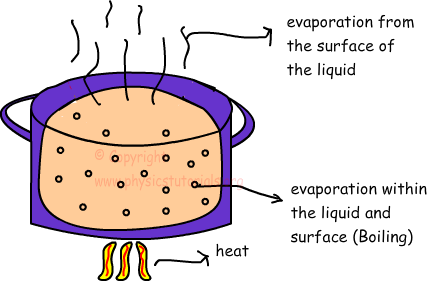
FACTORS AFFECTING EVAPORATION.
1. The temperature of the liquid.
2. The nature of the liquid substance increase with surface area, wind, lower relative humidity and higher liquid temperature.
EVALUATION
1. State differences between boiling point and evaporation.
2. State two factors that affect evaporation.
https://youtu.be/gZBt4_Ds3lI
https://youtu.be/dGoUcULSnJw
ASSIGNMENT
Students are to read about ‘kinetic theory of matter’ from
(i) Nigerian Basic Science project Pages 101-103
(ii) Basis Science (made easy)Book Two pages 73-81.
LESSON 30
MAIN TOPIC: Pollution
SPECIFIC TOPIC: Meaning of pollution
REFERENCE BOOK: Integrated Science for JSCE by Adebayo Begun
PERFORMANCE OBJECTIVES: At the end of the lesson the students should be able to:
a. Define pollution
b. Define air pollution
c. Define air pollutants
CONTENT: Pollution
Pollution is the introduction of unwanted and harmful material into the environment. Pollution of our environment affects man and other organisms.
Types of pollution are:
a. Air pollution

b. Land pollution
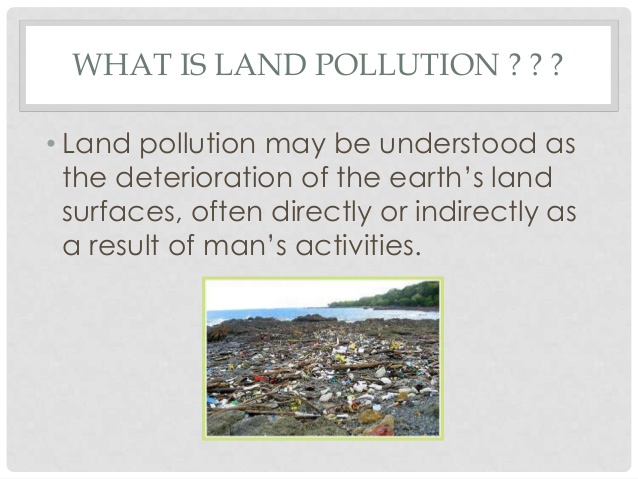
c. Water pollution
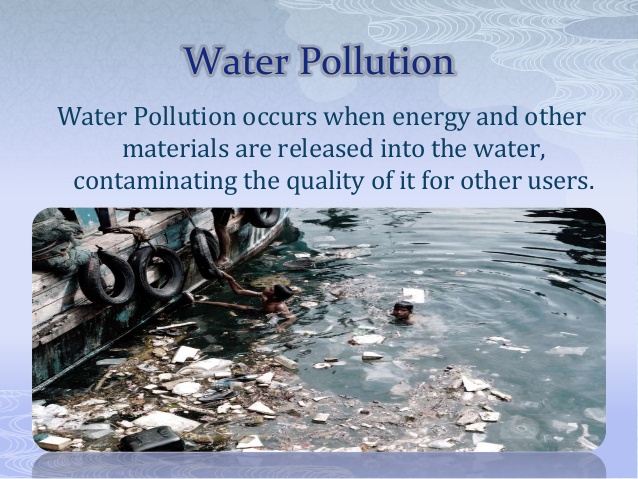
Air Pollution: is the introduction of harmful substance into the air or atmosphere. Air pollutants can be solid or gaseous materials. Solid air pollutants are smoke, dust, lead and radioactive materials. Gaseous air pollutants are sulphur dioxide, carbon monoxide, nitrogen oxides etc.
Effects of our Pollutants
a. Some are poisonous and can cause death
b. Some causes leaf injury and stunt growth of plant
c. Causes respiratory problems
EVALUATION:
a. Define pollution
b. Mention type of pollution
c. Explain air pollution and mention air pollutants
ASSIGNMENT
Briefly explain water pollution
further studies
http://www.worstpolluted.org/pollution-facts-2009.html
http://facts.randomhistory.com/pollution-facts.html
practice test
http://www.softschools.com/quizzes/scie ... iz809.html
http://www.quizmoz.com/quizzes/Children ... s-Quiz.asp
TOPIC: KINETIC ENERGY
CONTENT: 1.Statement of the kinetic theory.
2.Explanation of some phenomena using kinetic theory.
3.Explanation of boiling and evaporation using kinetic theory and factors that affects
evaporation.
STATEMENTS OF THE KINETIC THEORY
The kinetic theory of matter assumes that matter is made up of tiny particles such
as atoms, molecules and ions that are continually moving and therefore possess kinetic energy.
The basic statement of the kinetic theory of gases include:
1. A gas is made up of molecules which are constantly moving in random manner in all directions.
2. Molecules of a gas collide with one another and with the walls of a
container.
3. The collisions of the gas molecules are perfectly elastic .
4. Force of attraction or repulsion between gas molecules are small and
negligible.
5. The temperature of the gas is proportional to the average kinetic energy
of the gas molecules.

https://youtu.be/XgfOVwmlS1g
EVALUATION
1. State the kinetic energy theory of matter
2. Mention any three statement of kinetic energy and vibrate
Experiment
[https://youtu.be/jZzSe-63fNg
LESSON 28
EXPLANATION OF SOME PHENOMENA USING KINETIC THEORY
1. MELTING
When a solid is heated, the particles acquire more kinetic energy and vibrate more vigorously. Eventually, at a certain temperature called the melting point of the solid, the force of the vibration overcomes the binding force and the solid structures collapses. The particles are no longer held in fixed positions but ready to move about. At this point, the solid is said to have melted or liquefied.

DIFFUSION:
Diffusion is defined as the movement of solute particles through a medium, from a region of lower concentration. That is movement from a more crowded region to a less crowded region.
Once the solute particles becomes evenly distributed throughout the medium, there will be net diffusion in any particular direction.
Diffusion is fastest in gases because gas particles have more kinetic energy than particles in liquids and solids.

EVALUATION
1. Define
(i) Melting point
(ii) Diffusion
2. Mention any two phenomena which can be explained by the kinetic theory.
LESSON 29
EXPLANATION OF BOILING AND EVAPORATION USING KINETIC THEORY AND FACTORS THAT AFFECT EVAPORATION.
EVAPORATION: Evaporation is the escaping of molecules of a liquid from its surface. It takes place at all temperature.
BOILING: Boiling is the vaporization of liquid molecules throughout the entire liquid. The temperature at which a liquid changes into vapour is called its boiling point.

FACTORS AFFECTING EVAPORATION.
1. The temperature of the liquid.
2. The nature of the liquid substance increase with surface area, wind, lower relative humidity and higher liquid temperature.
EVALUATION
1. State differences between boiling point and evaporation.
2. State two factors that affect evaporation.
https://youtu.be/gZBt4_Ds3lI
https://youtu.be/dGoUcULSnJw
ASSIGNMENT
Students are to read about ‘kinetic theory of matter’ from
(i) Nigerian Basic Science project Pages 101-103
(ii) Basis Science (made easy)Book Two pages 73-81.
LESSON 30
MAIN TOPIC: Pollution
SPECIFIC TOPIC: Meaning of pollution
REFERENCE BOOK: Integrated Science for JSCE by Adebayo Begun
PERFORMANCE OBJECTIVES: At the end of the lesson the students should be able to:
a. Define pollution
b. Define air pollution
c. Define air pollutants
CONTENT: Pollution
Pollution is the introduction of unwanted and harmful material into the environment. Pollution of our environment affects man and other organisms.
Types of pollution are:
a. Air pollution

b. Land pollution

c. Water pollution

Air Pollution: is the introduction of harmful substance into the air or atmosphere. Air pollutants can be solid or gaseous materials. Solid air pollutants are smoke, dust, lead and radioactive materials. Gaseous air pollutants are sulphur dioxide, carbon monoxide, nitrogen oxides etc.
Effects of our Pollutants
a. Some are poisonous and can cause death
b. Some causes leaf injury and stunt growth of plant
c. Causes respiratory problems
EVALUATION:
a. Define pollution
b. Mention type of pollution
c. Explain air pollution and mention air pollutants
ASSIGNMENT
Briefly explain water pollution
further studies
http://www.worstpolluted.org/pollution-facts-2009.html
http://facts.randomhistory.com/pollution-facts.html
practice test
http://www.softschools.com/quizzes/scie ... iz809.html
http://www.quizmoz.com/quizzes/Children ... s-Quiz.asp